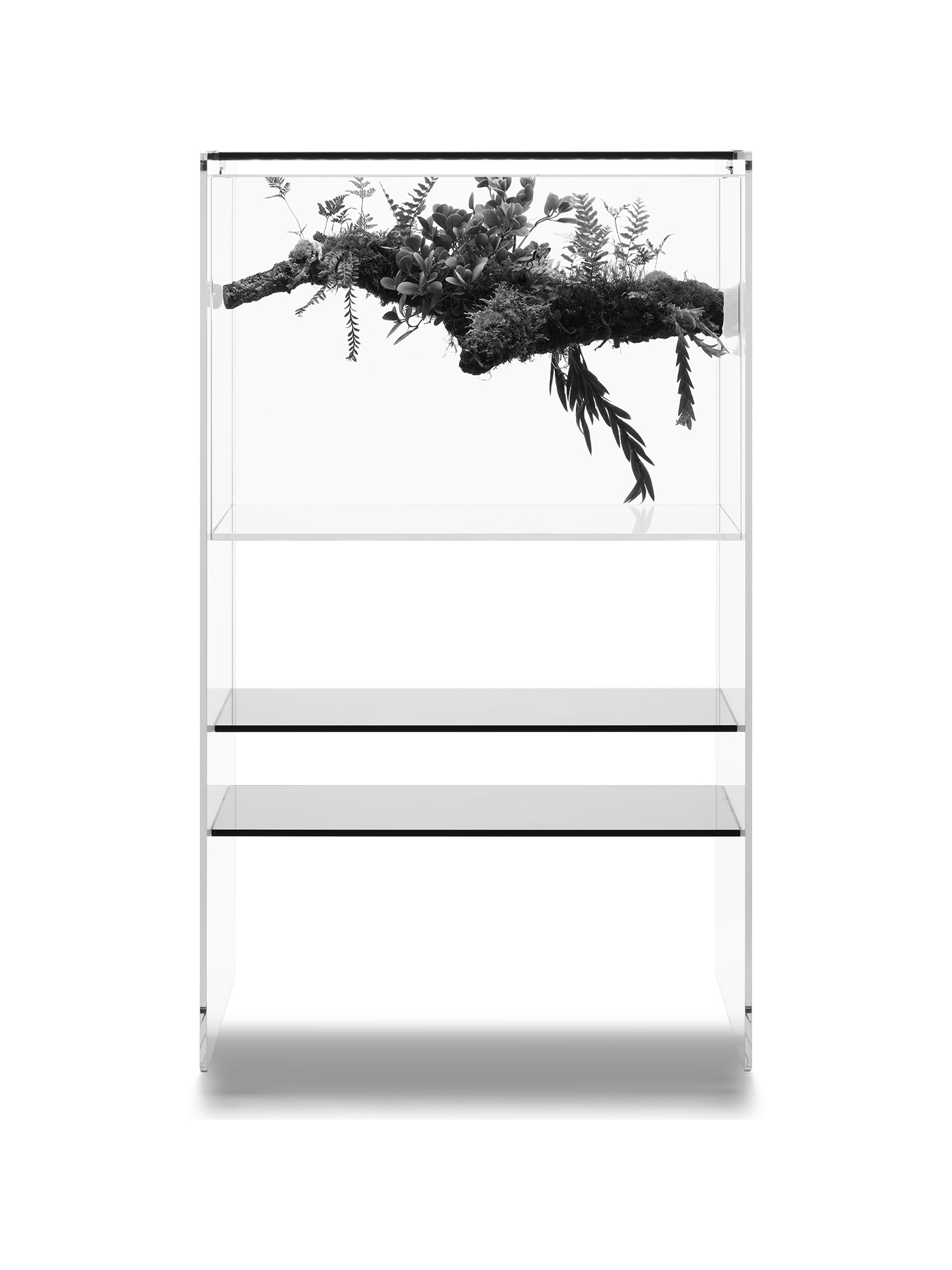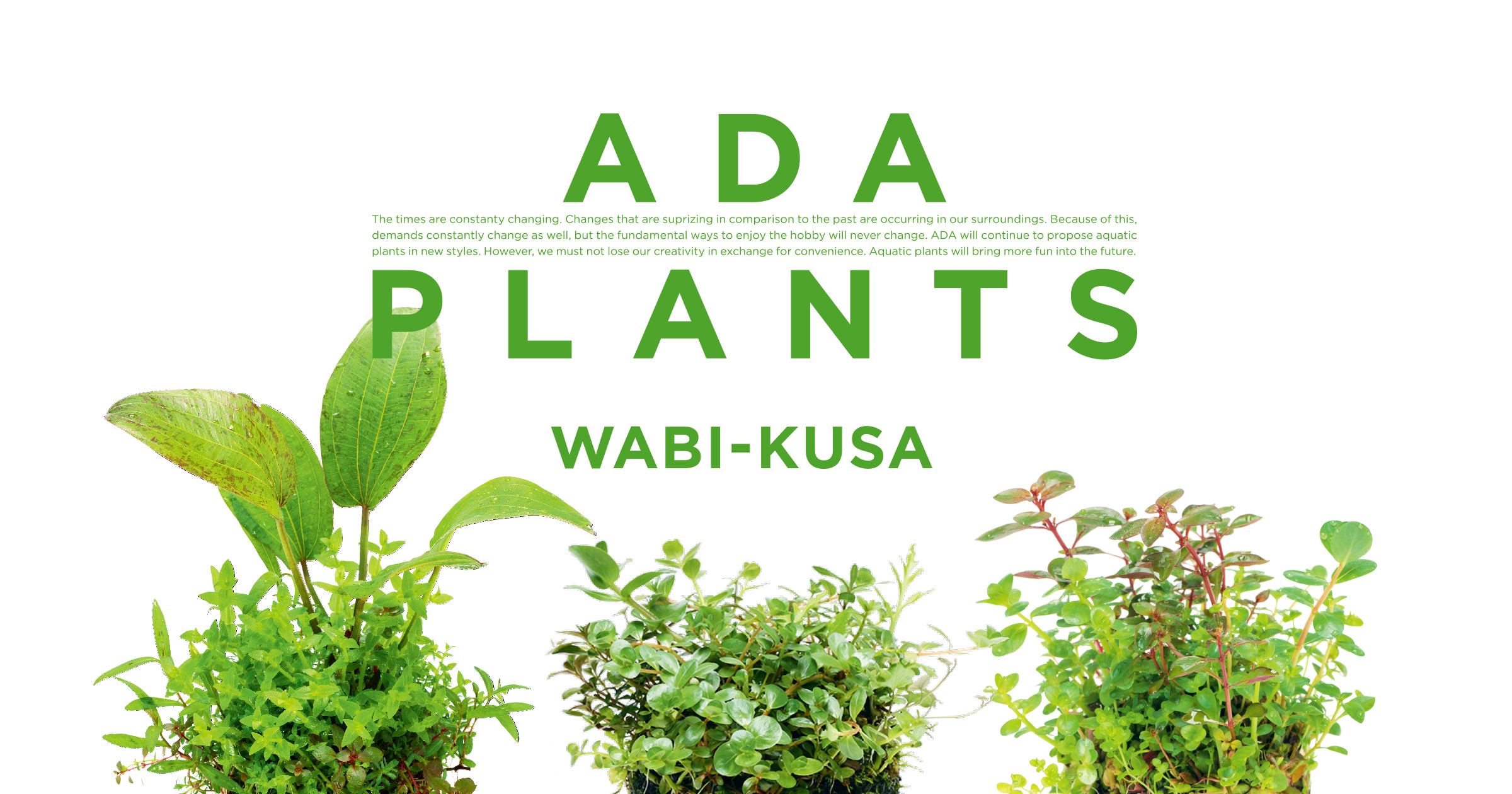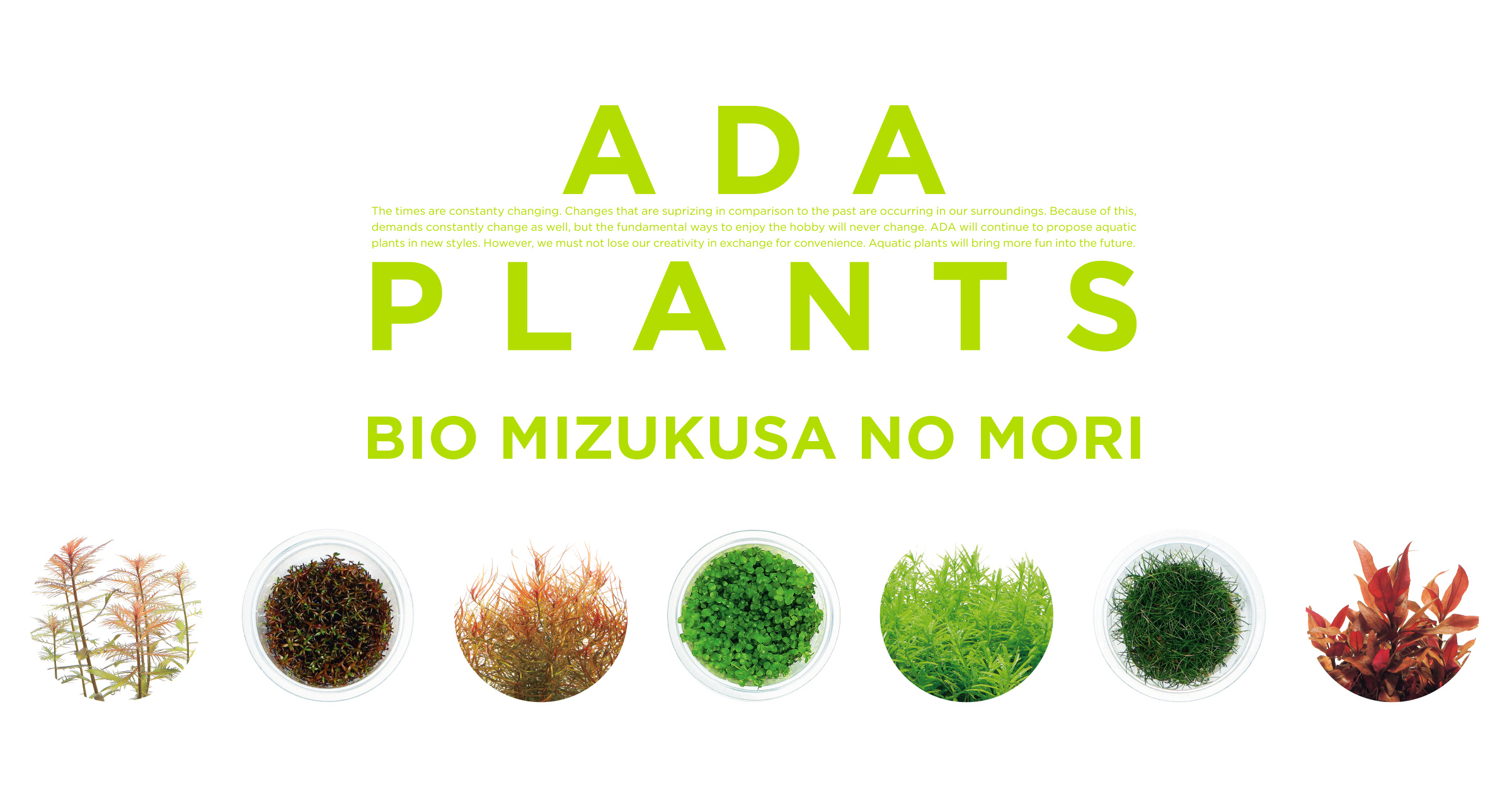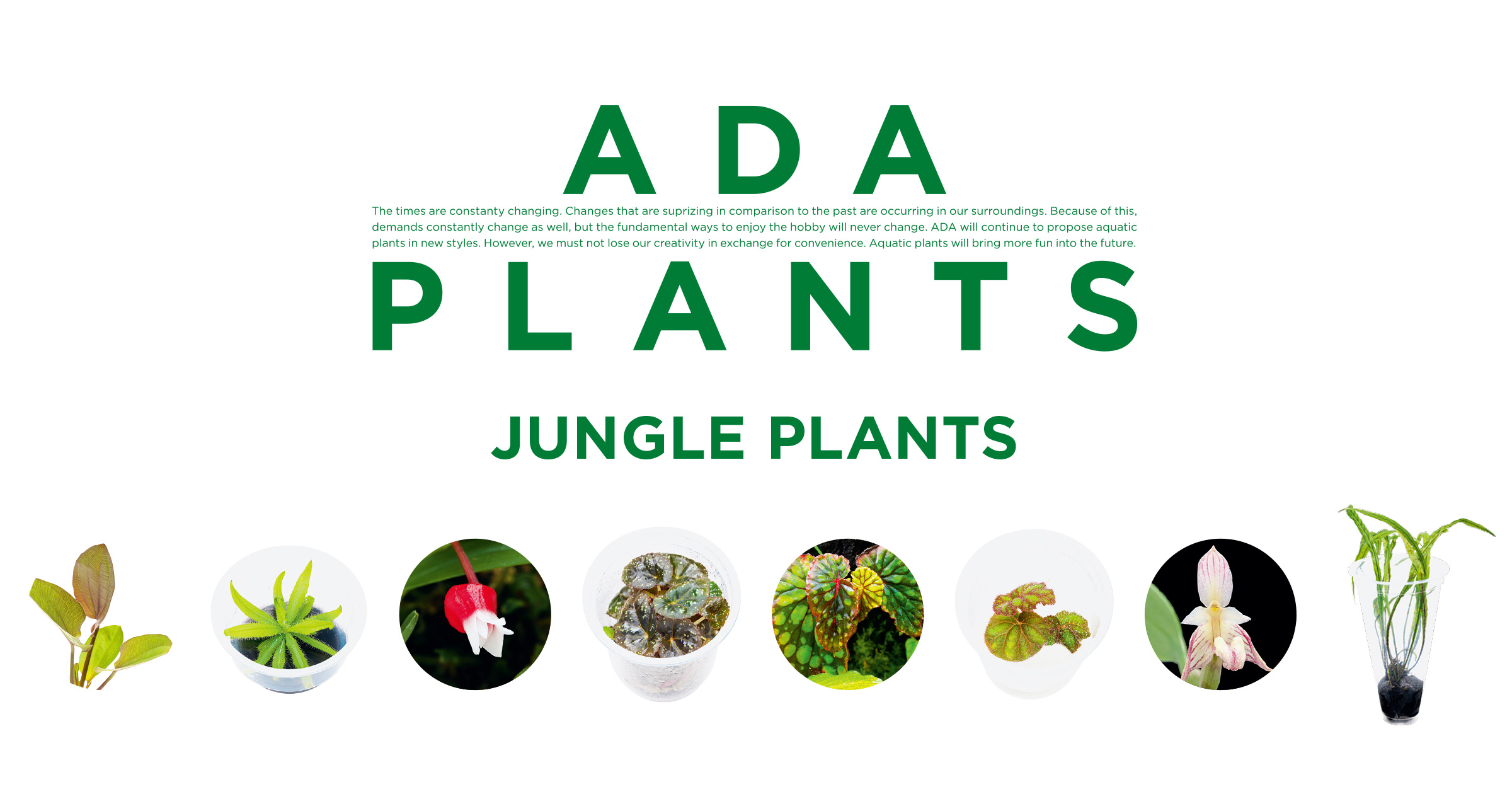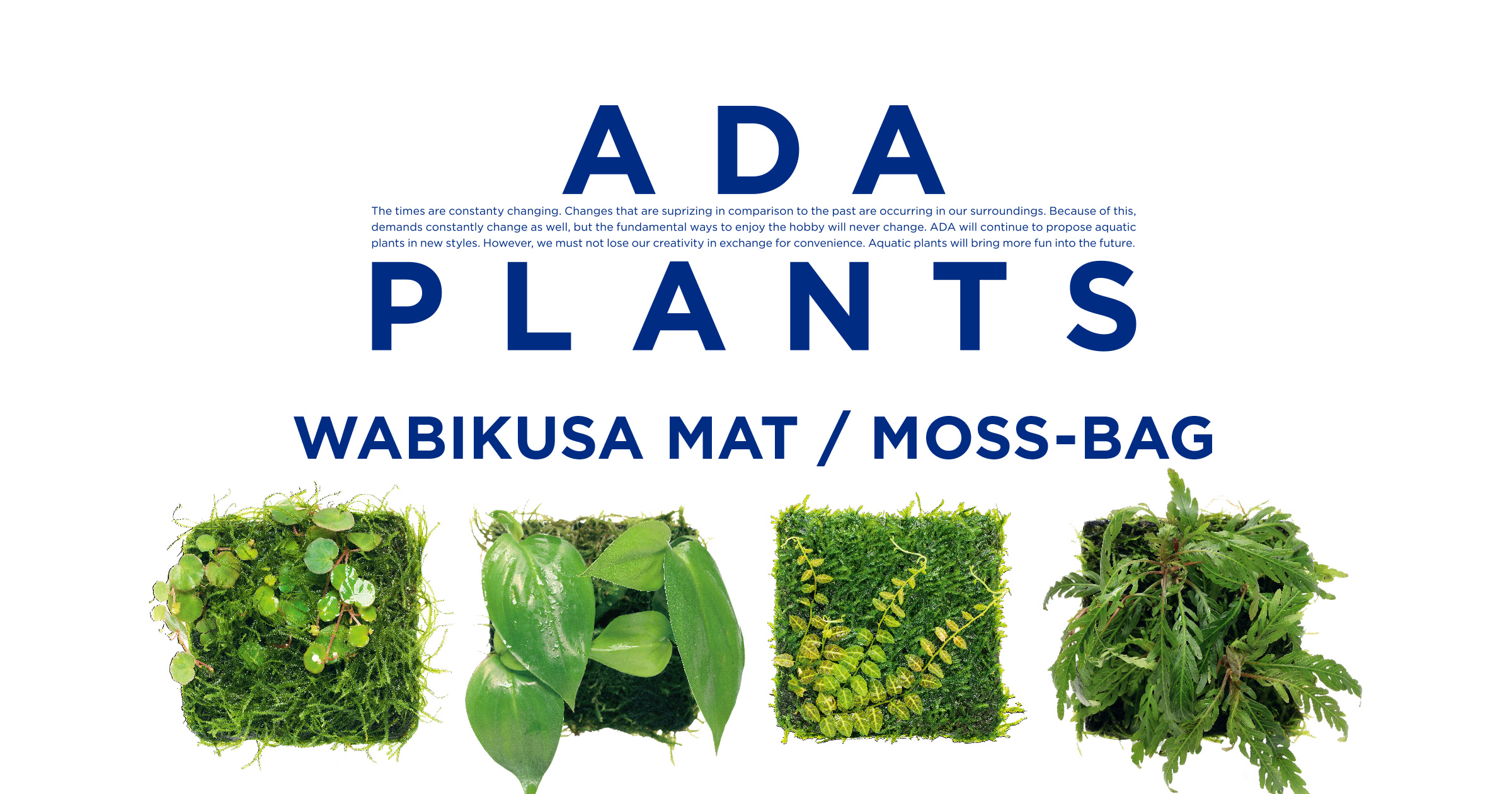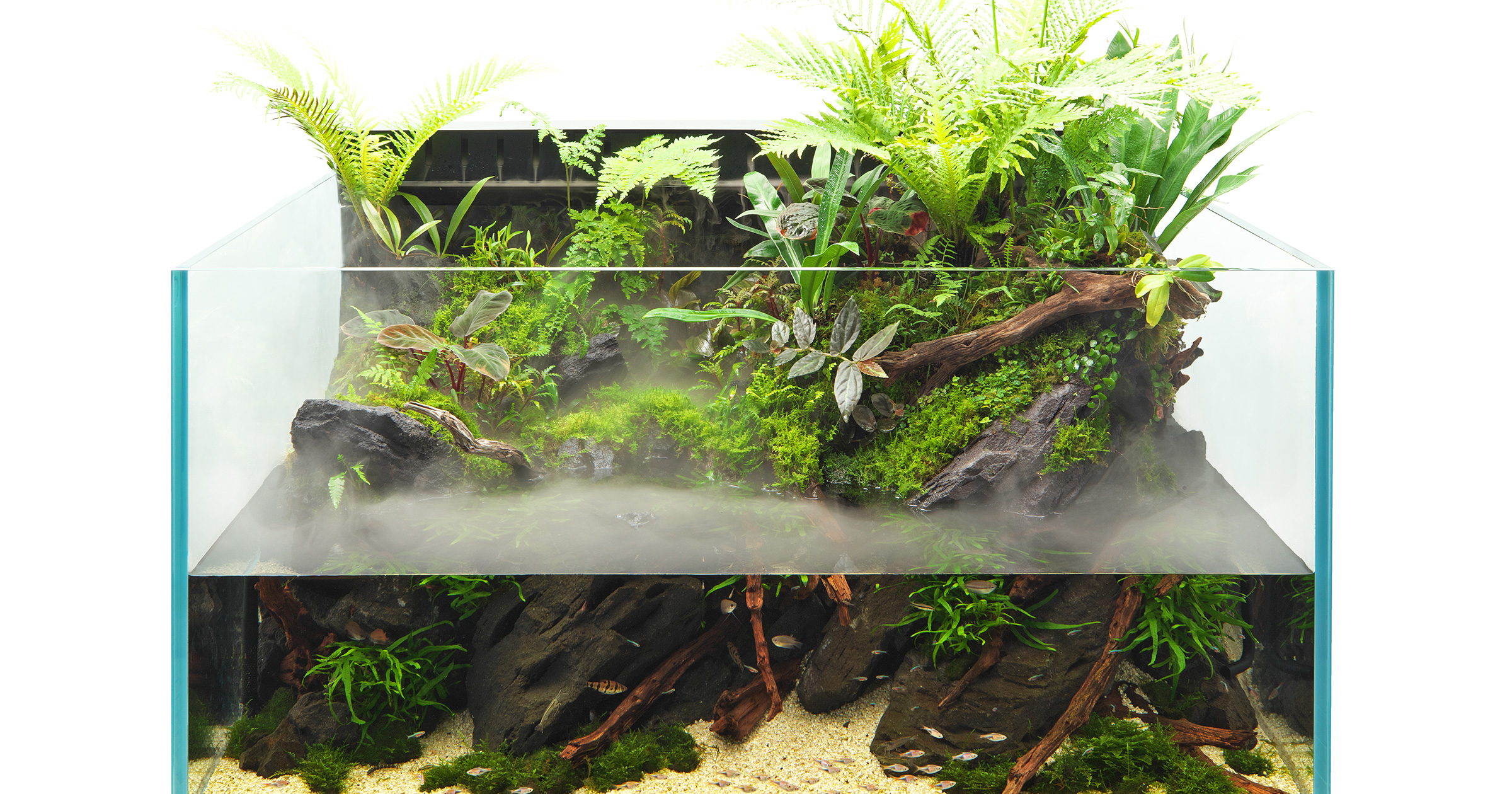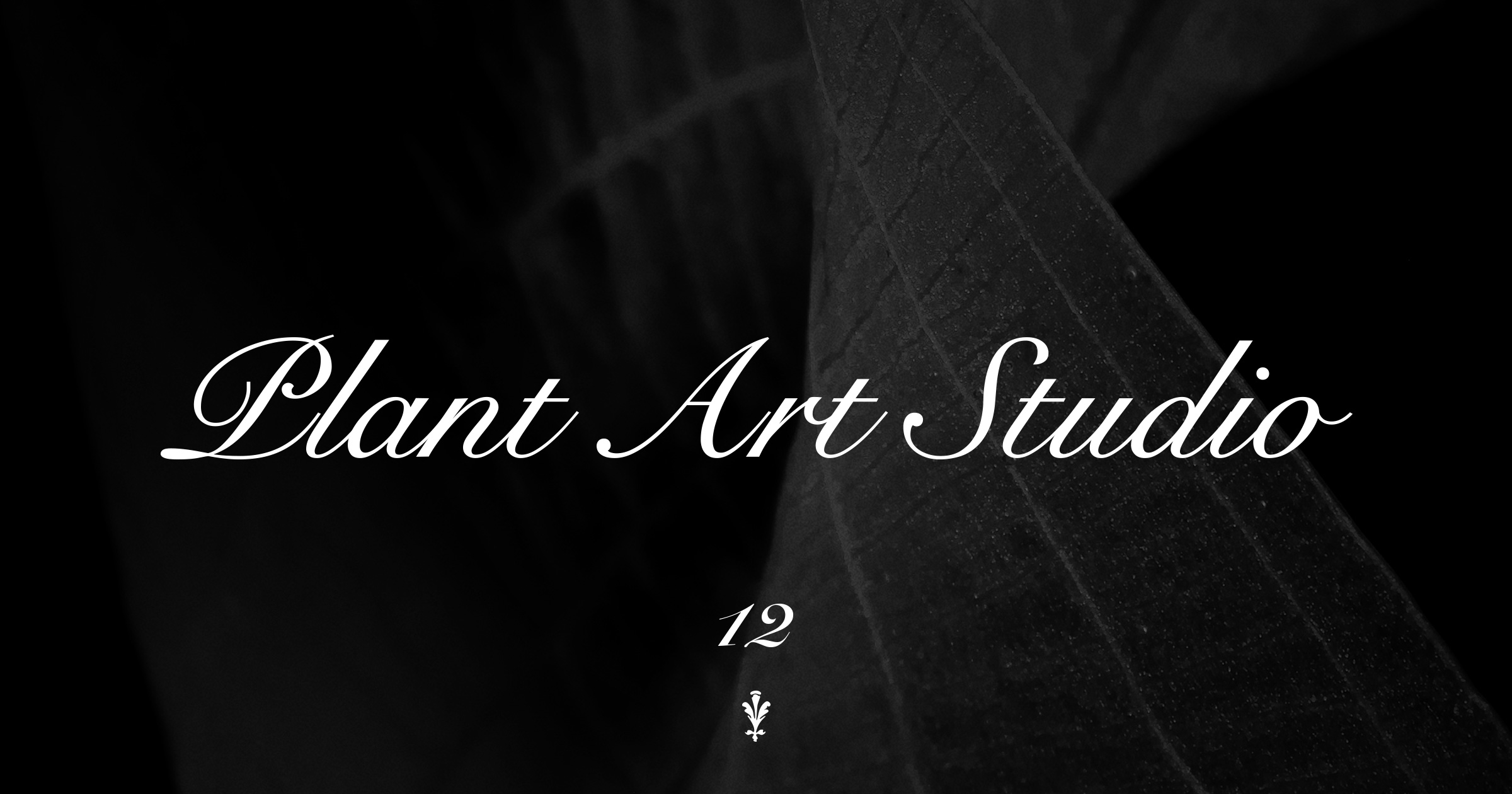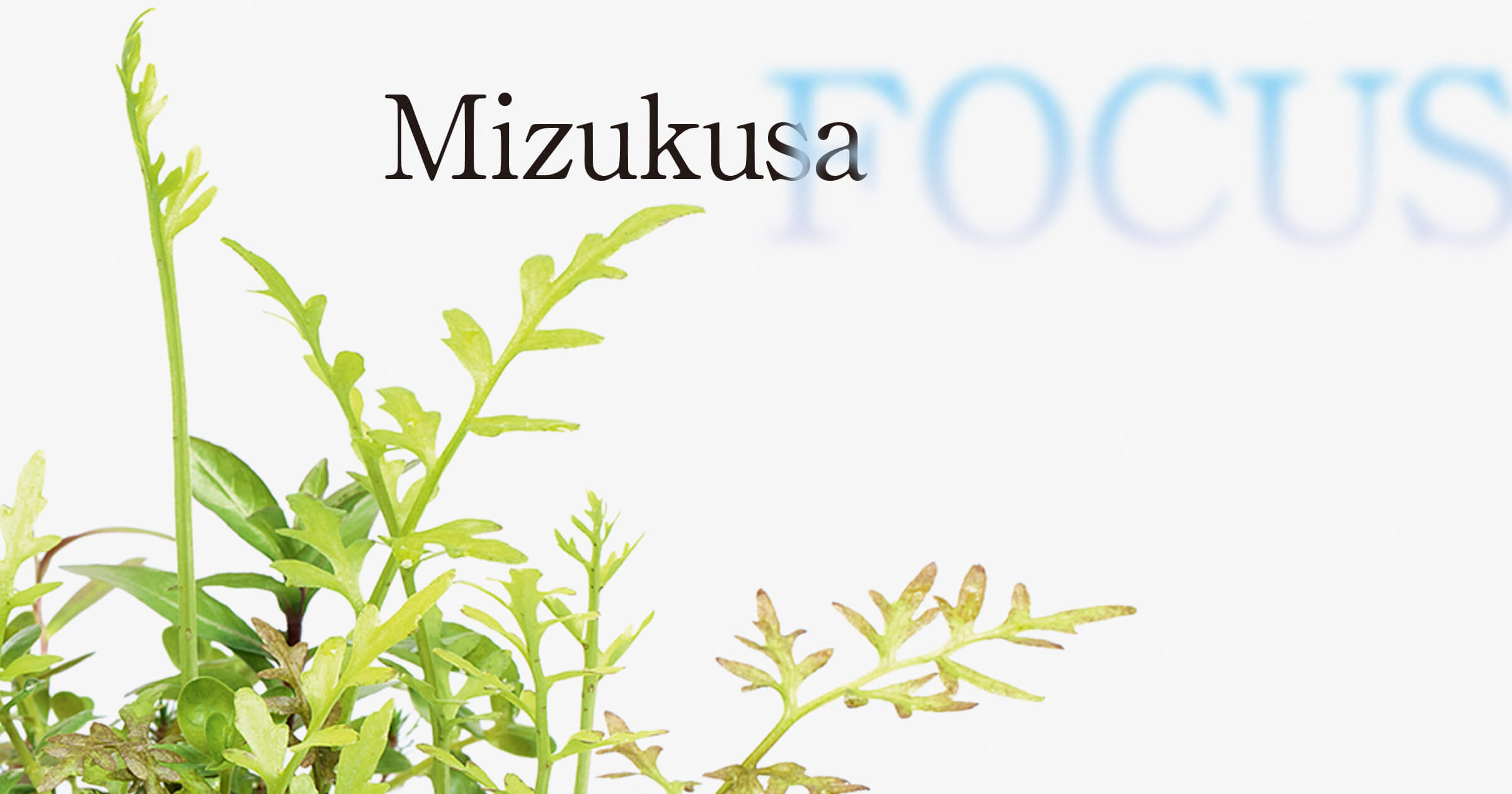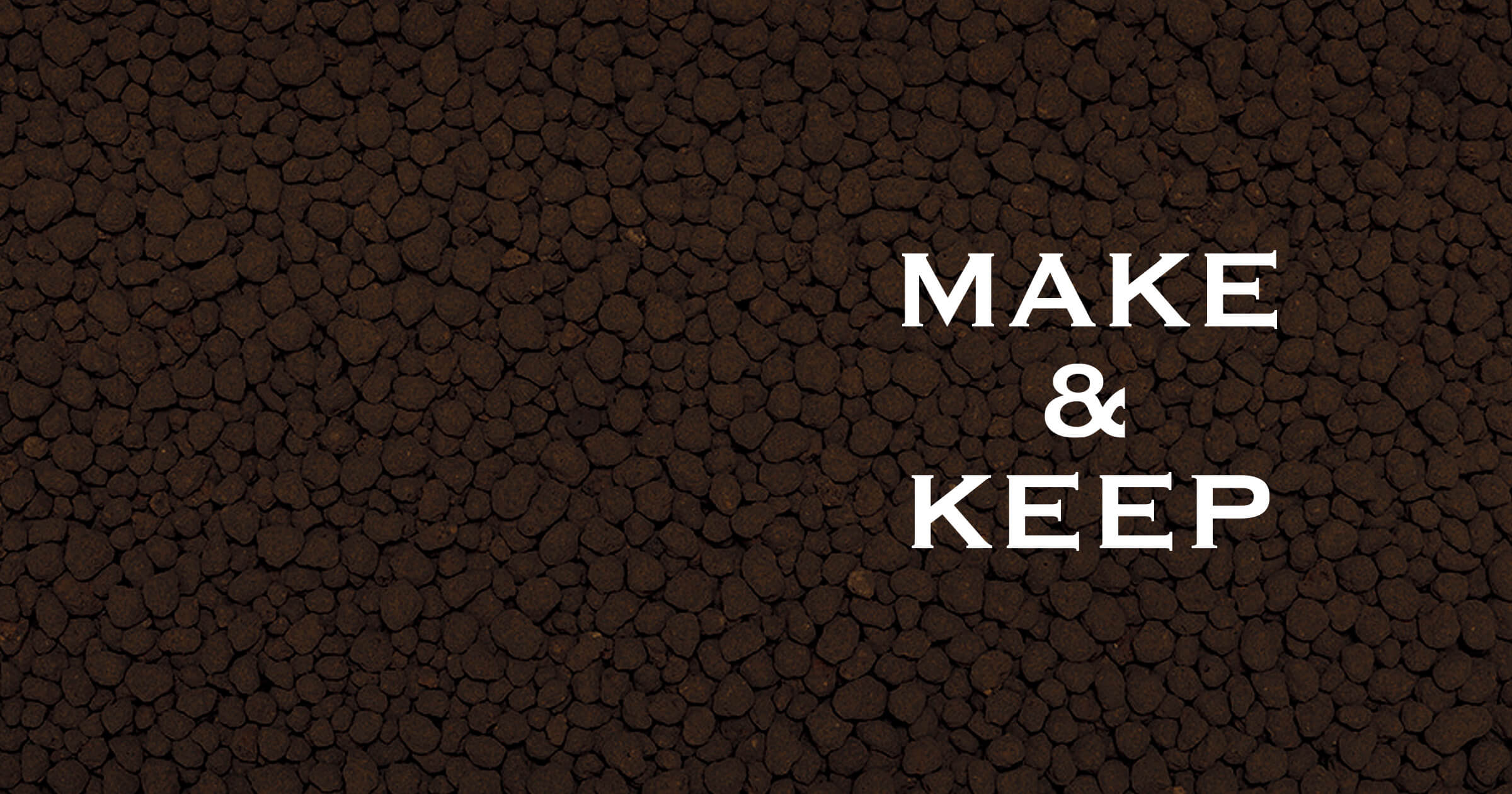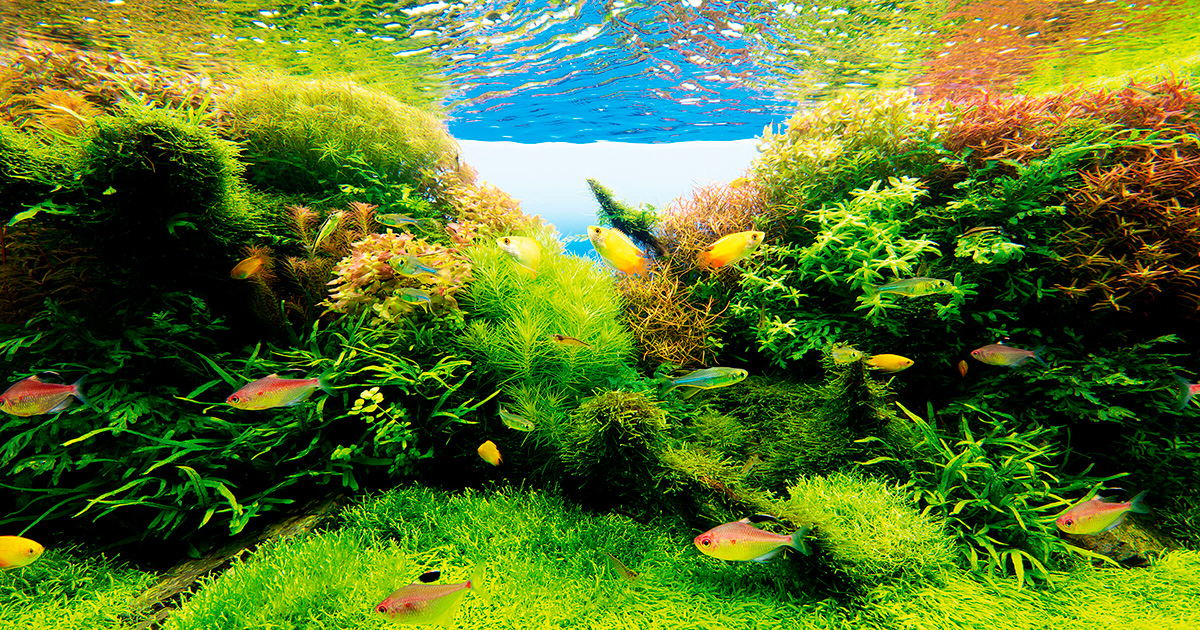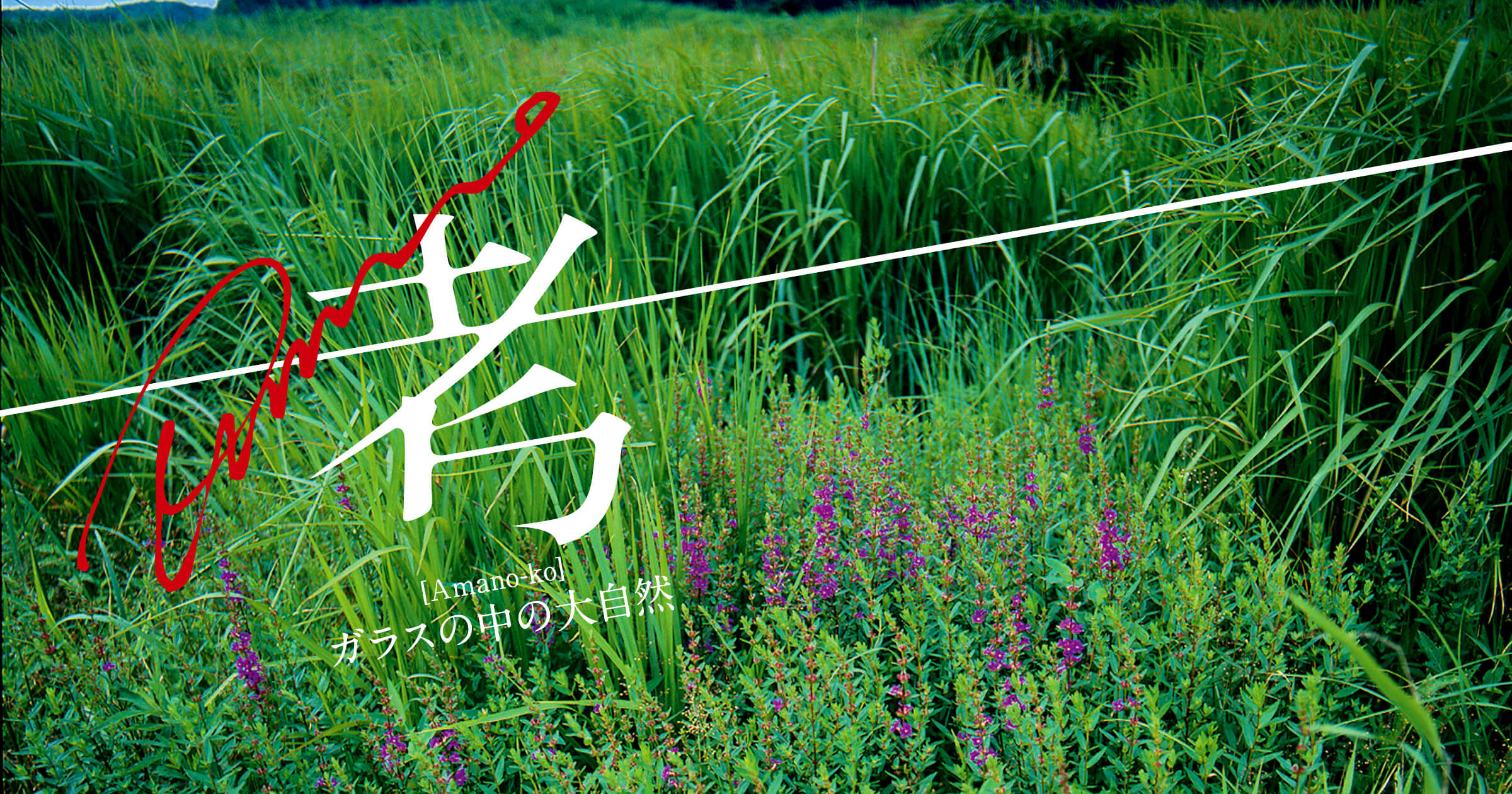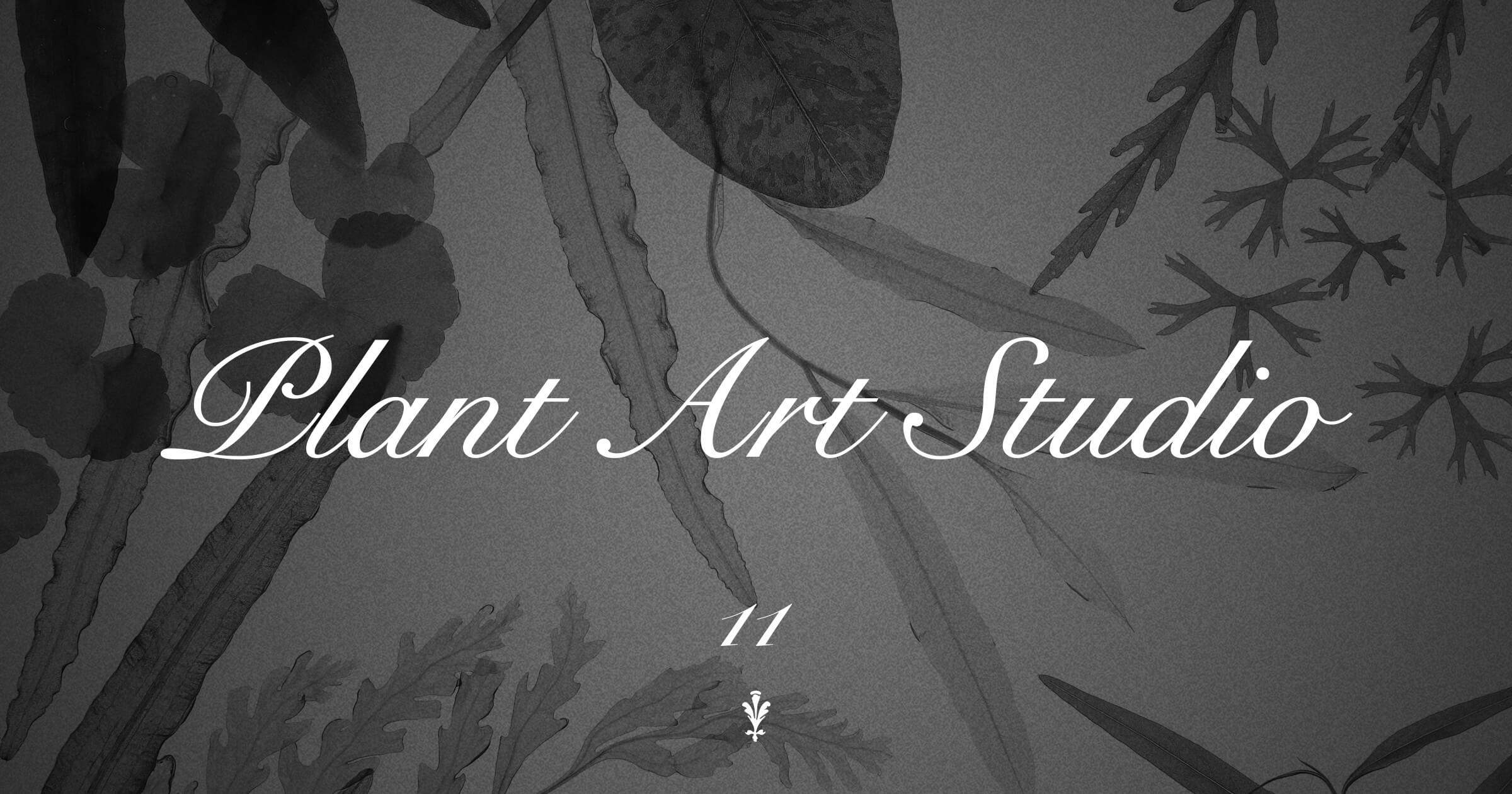ADA PLANTS ‘BIO Mizukusa no Mori’
Now, it’s the standard style of aquatic plant products
Full lineup from foreground plants to stem plants. There is no need to worry about snails and algae, and they all have plenty of volume. It is now agar-free and much easier to use.
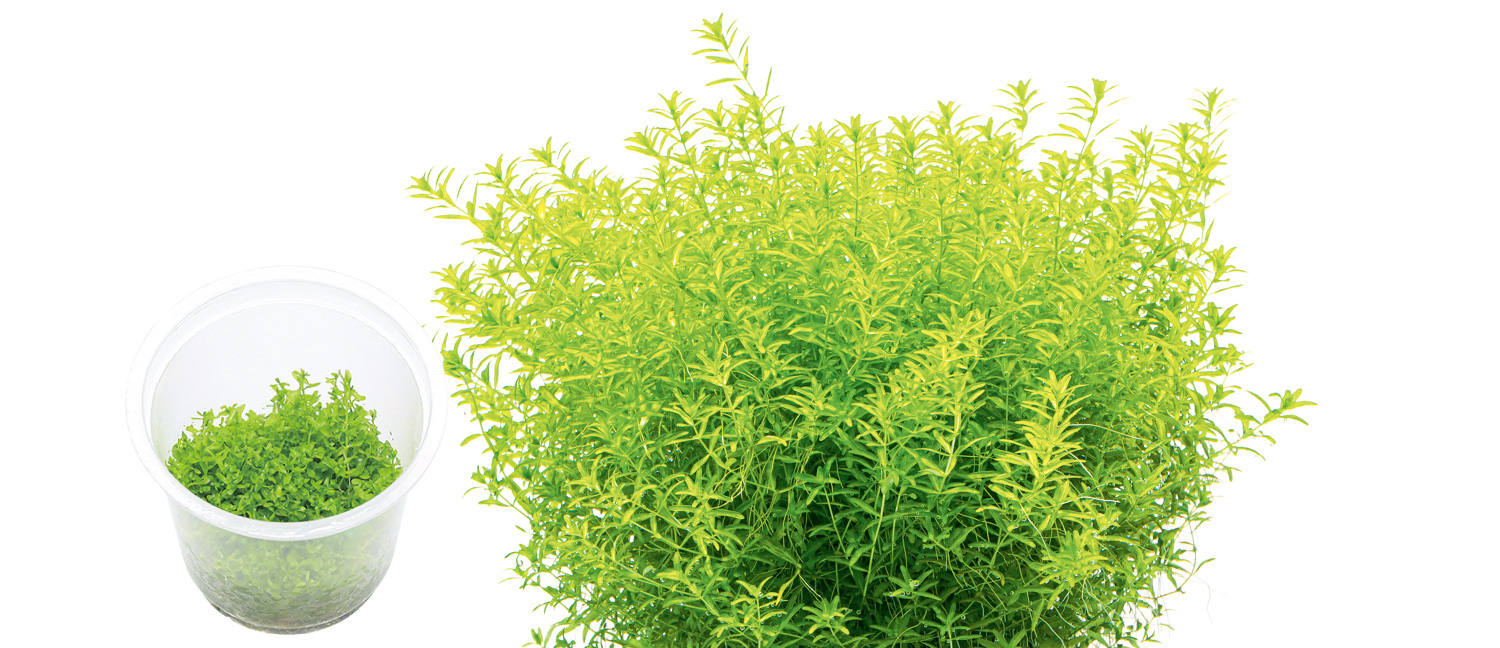
BIO Mizukusa no Mori Hemianthus micranthemoides
Oxygen bubbles arisen from lovely clear leaves express the true meaning of Nature Aquarium.
Oxygen bubbles arisen from lovely clear leaves express the true meaning of Nature Aquarium.
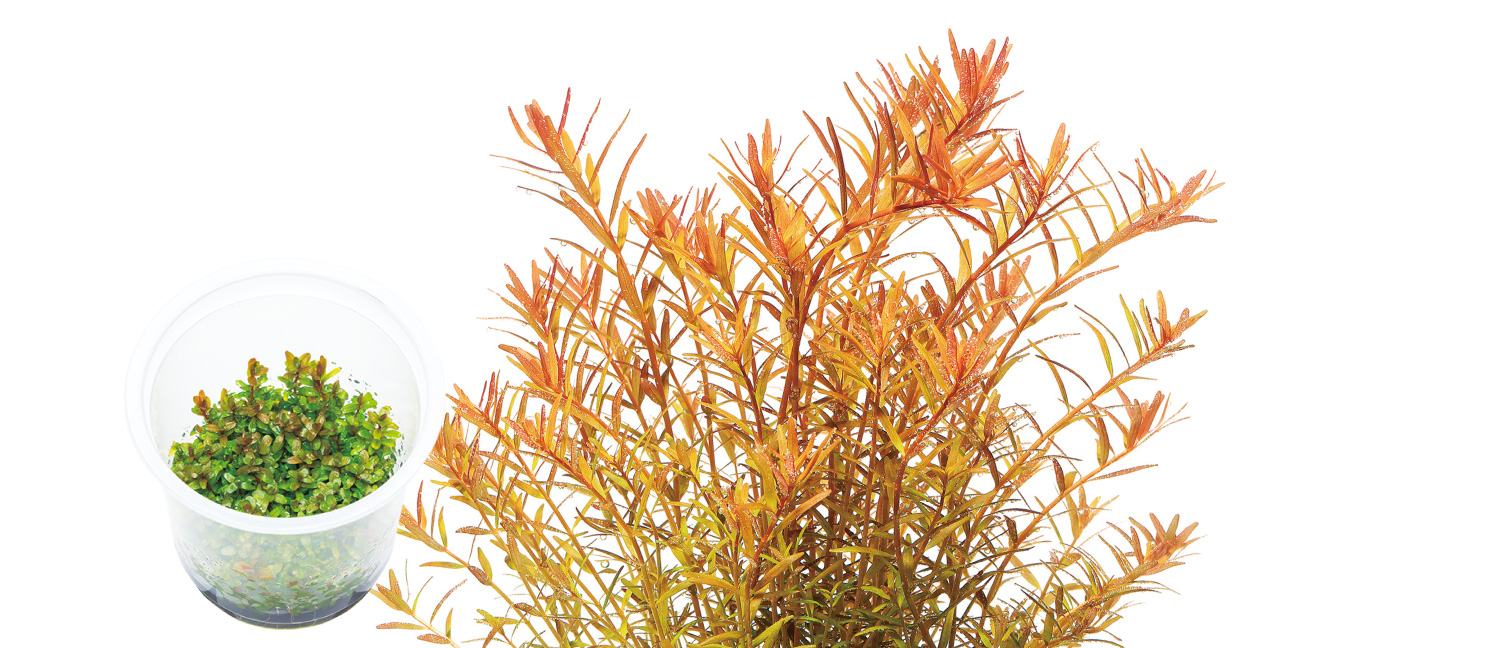
BIO Mizukusa no Mori Rotala rotundifolia
While mixing it with other Rotala with different hues, creating a beautiful gradation by trimming repeatedly is a goal.
While mixing it with other Rotala with different hues, creating a beautiful gradation by trimming repeatedly is a goal.
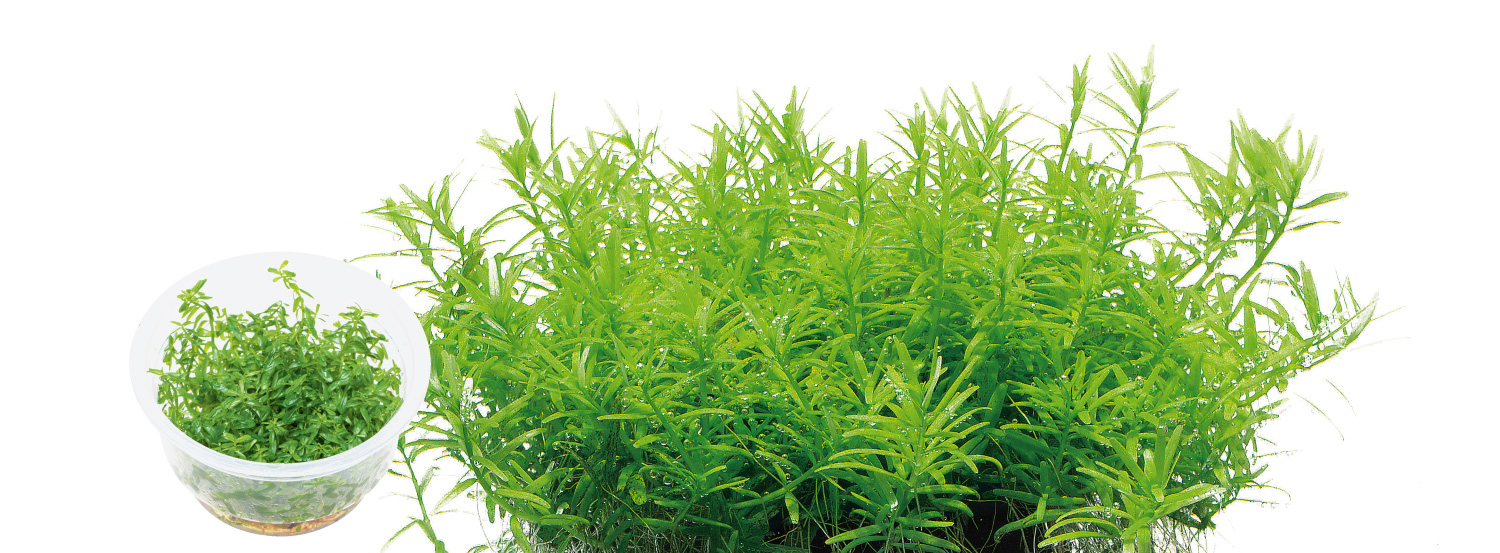
BIO Mizukusa no Mori Rotala rotundifolia ‘Green’
Although it is a general species, it is an invaluable asset because it steadily grows densely in bright green. If some of them grow tilted after planting, trimming helps improve the condition.
Although it is a general species, it is an invaluable asset because it steadily grows densely in bright green. If some of them grow tilted after planting, trimming helps improve the condition.
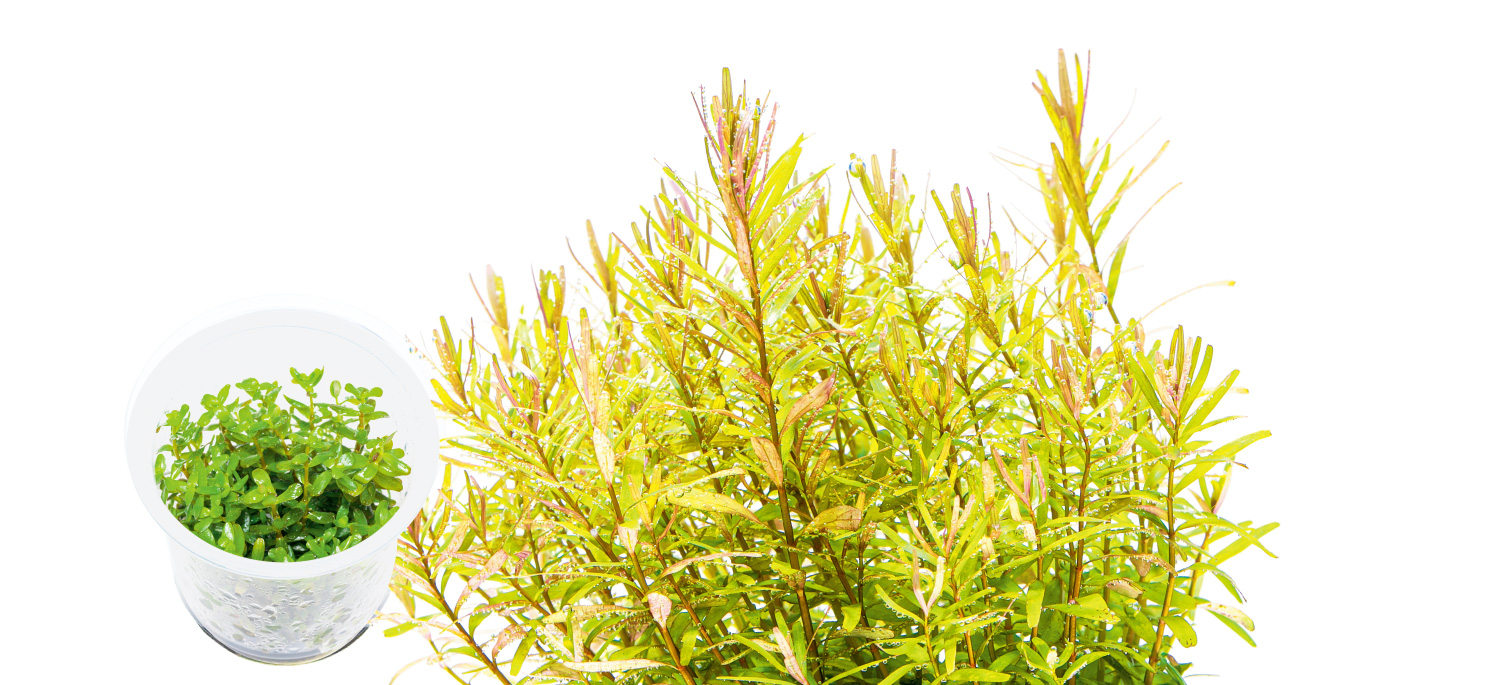
BIO Mizukusa no Mori Rotala rotundifolia ‘Ceylon’
It is native to Sri Lanka, and it develops aquatic leaves having thin stems with a soft impression. It is a key player to ease a strong impression of stem plants.
It is native to Sri Lanka, and it develops aquatic leaves having thin stems with a soft impression. It is a key player to ease a strong impression of stem plants.
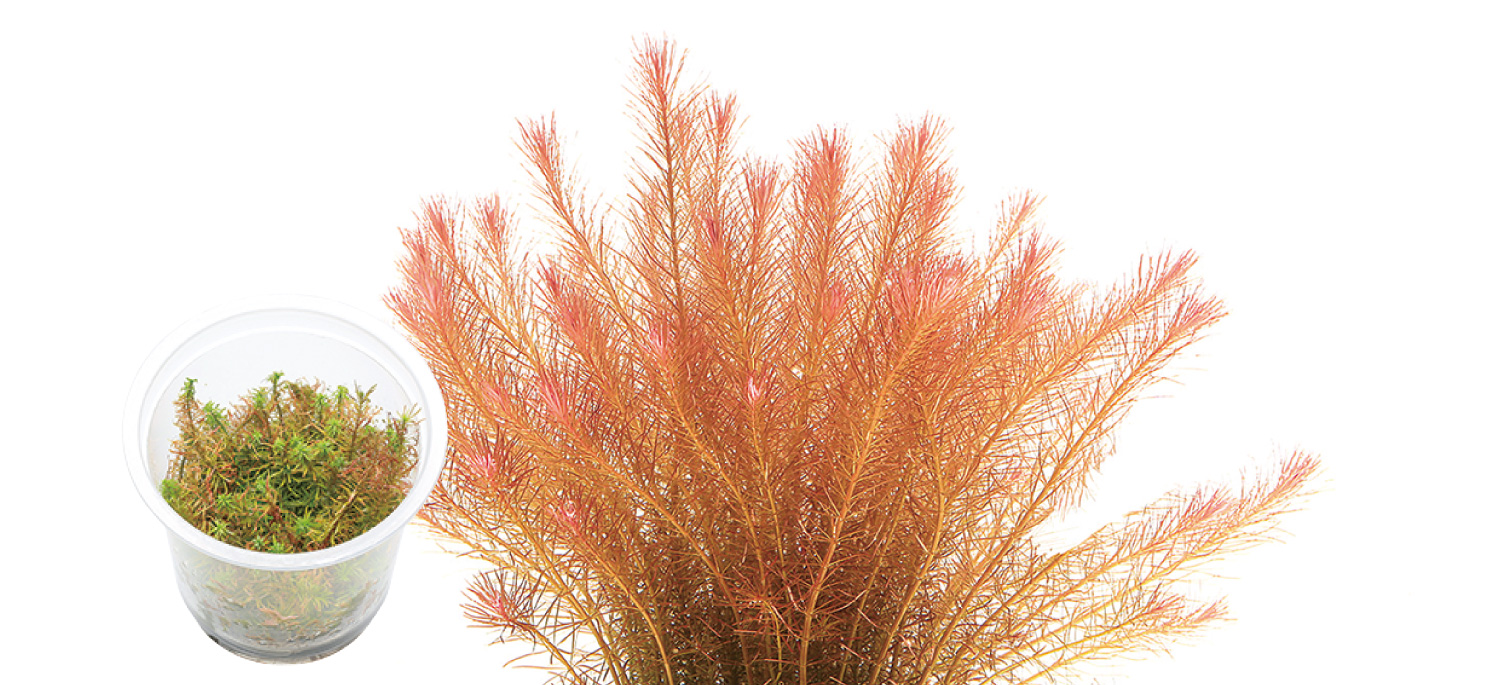
BIO Mizukusa no Mori Rotala sp. ‘Vietnam’
This Rotala develops skinny leaves in pale red. The way they grow densely is beautiful and impressive. But it is necessary to be careful with too much water retention.
This Rotala develops skinny leaves in pale red. The way they grow densely is beautiful and impressive. But it is necessary to be careful with too much water retention.
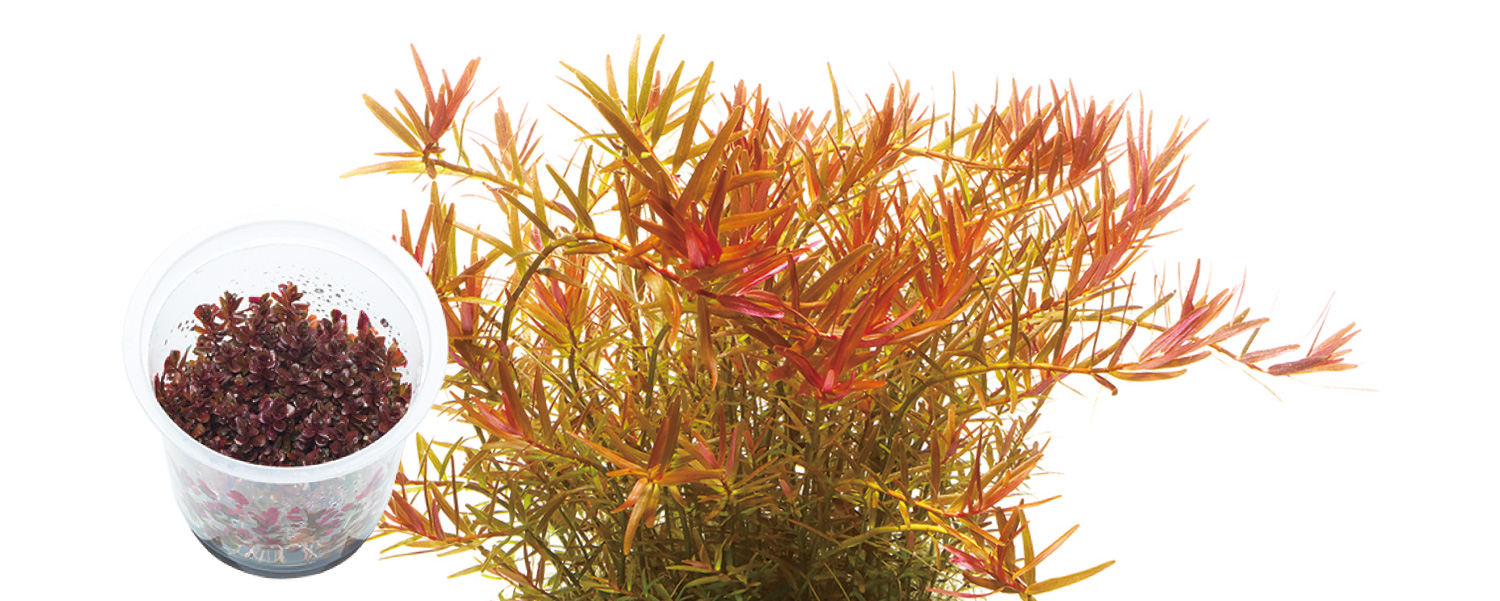
BIO Mizukusa no Mori Rotala sp. ‘Hra’
It is one of red aquatic plants in strong crimson. Changes in leaf color can be enjoyed after planting if it is tissue culture.
It is one of red aquatic plants in strong crimson. Changes in leaf color can be enjoyed after planting if it is tissue culture.
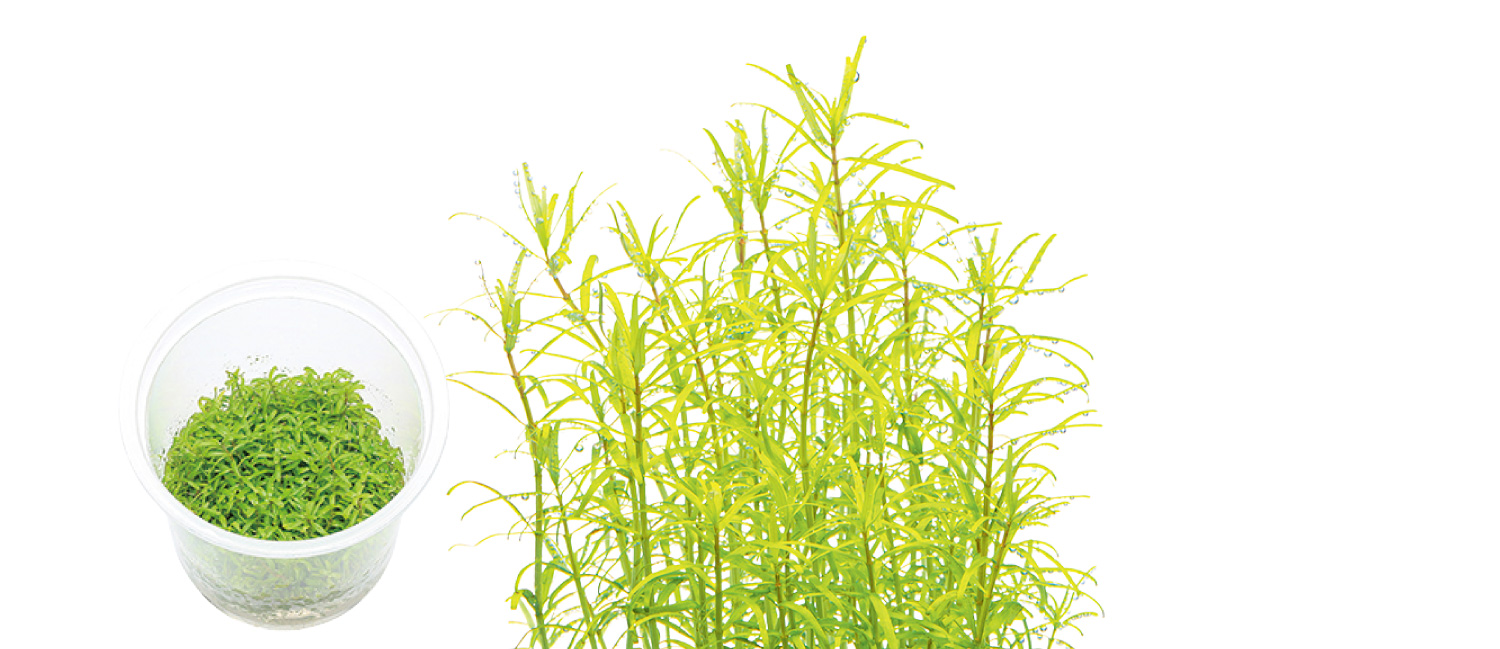
BIO Mizukusa no Mori Rotala sp. ‘Wayanad’
Because leaves and stems of this aquatic plant remain thin without growing large, it is the most suitable aquatic plant for aquascapes expressing a distant view. It is hardy for trimming and easy to use.
Because leaves and stems of this aquatic plant remain thin without growing large, it is the most suitable aquatic plant for aquascapes expressing a distant view. It is hardy for trimming and easy to use.
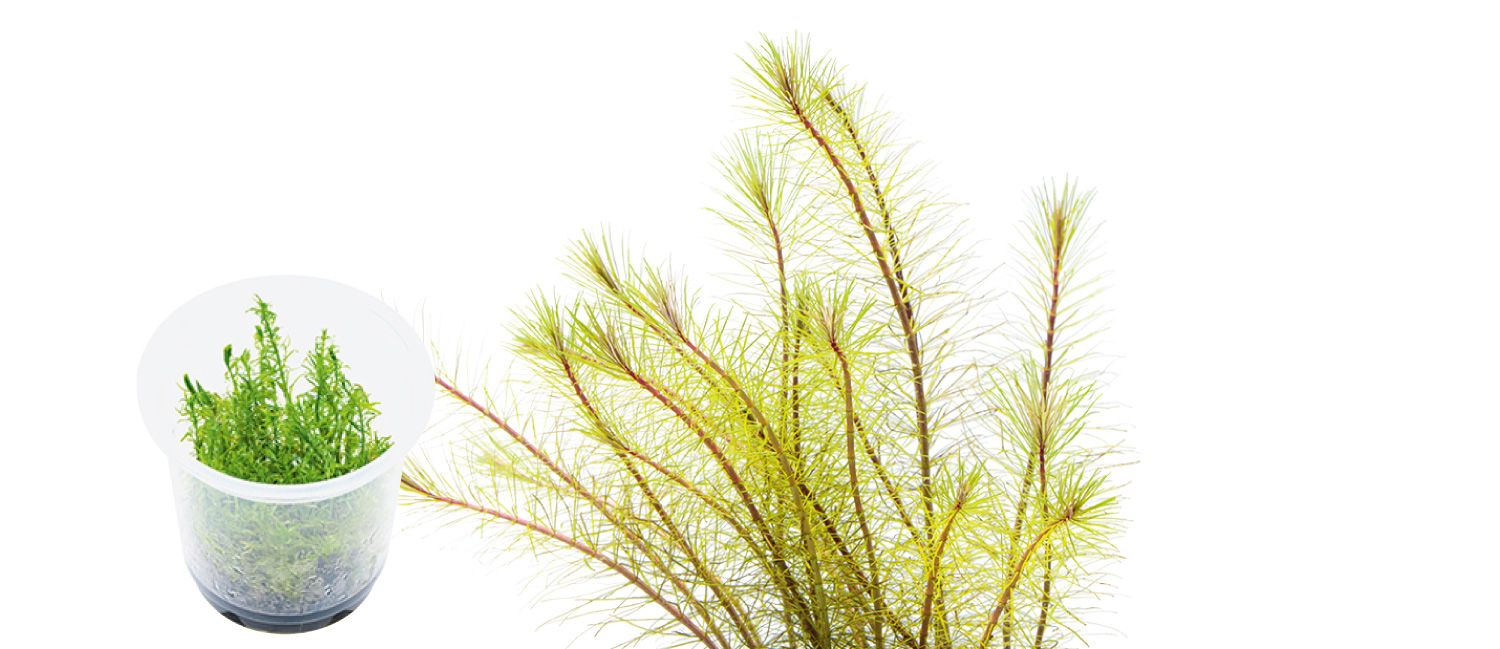
BIO Mizukusa no Mori Rotala wallichii ‘Long Leaf’
It develops linear leaves in pale orange to red, and its stems will turn slightly strong red. The leaves grow to be longer than Rotala wallichii.
It develops linear leaves in pale orange to red, and its stems will turn slightly strong red. The leaves grow to be longer than Rotala wallichii.
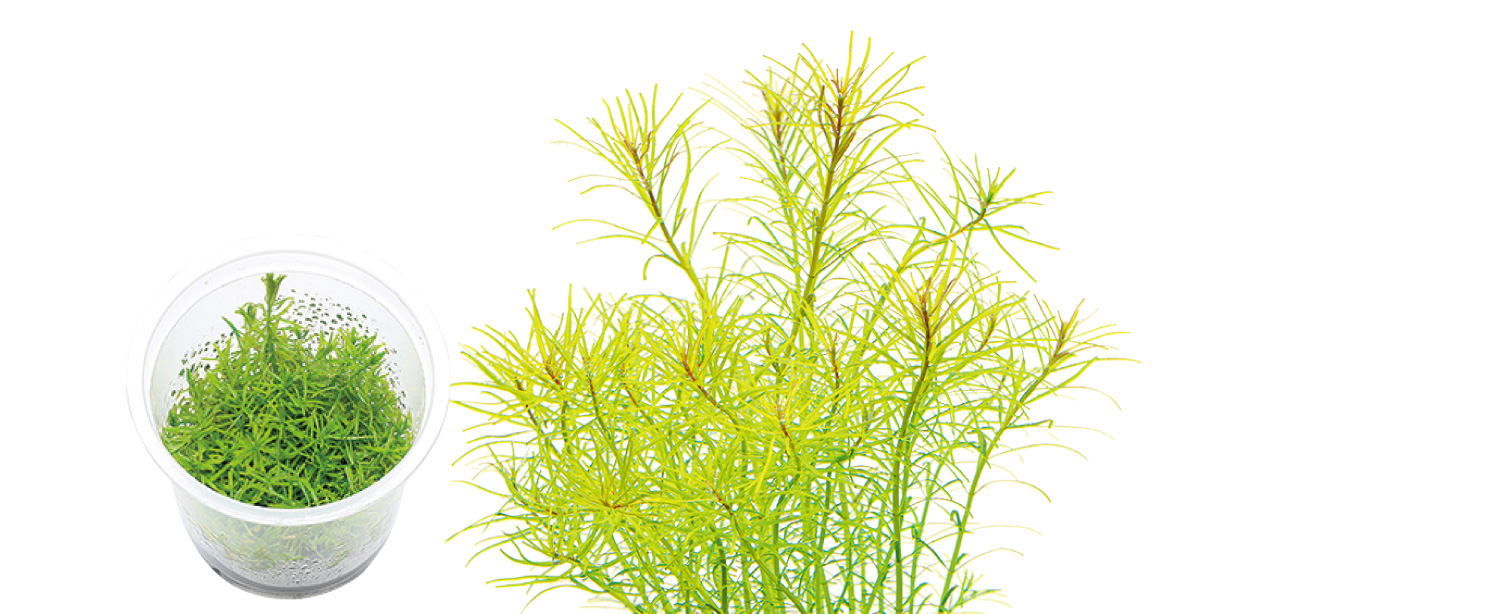
BIO Mizukusa no Mori Rotala nanjean
It develops linear leaves in bright green. Because the density of its leaves is moderate, it can be useful as a hideout for fish and invertebrates.
It develops linear leaves in bright green. Because the density of its leaves is moderate, it can be useful as a hideout for fish and invertebrates.
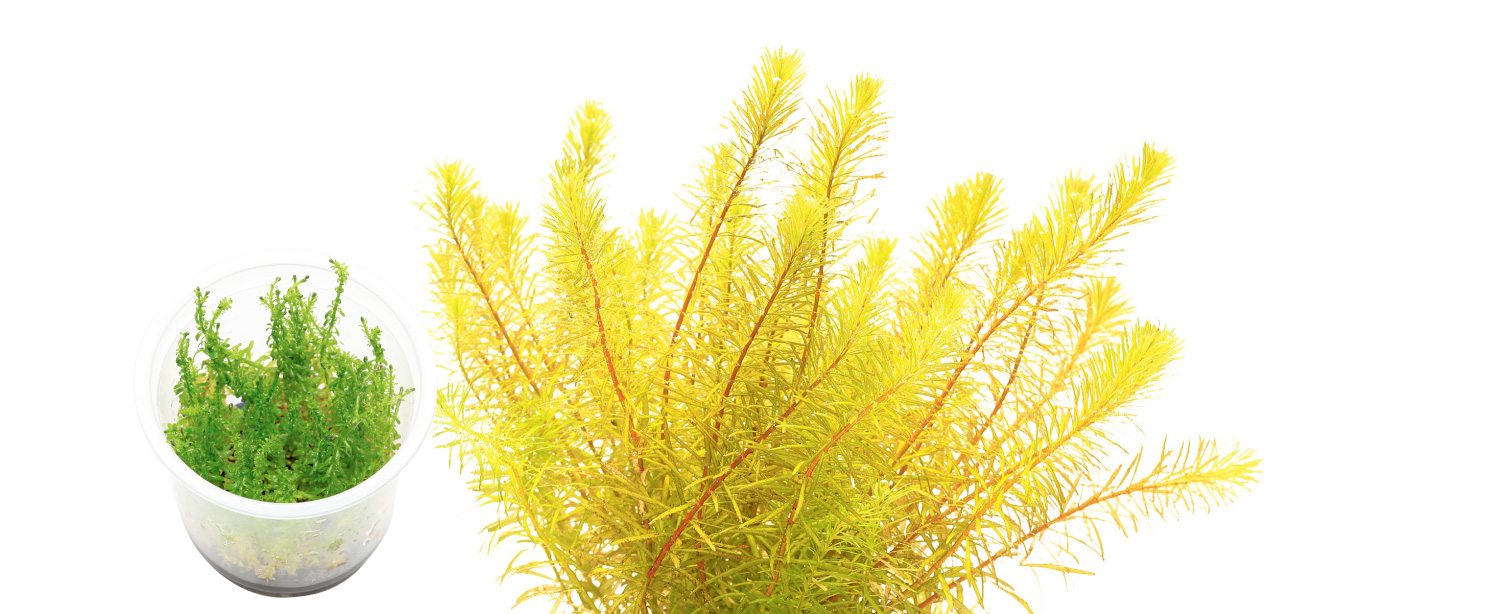
BIO Mizukusa no Mori Rotala sp. ‘Bangladesh’
Its stems with hint of pale red and bright thin leaves are beautiful. Under the stable water quality conditions, the aquatic plant shows vigorous growth.
Its stems with hint of pale red and bright thin leaves are beautiful. Under the stable water quality conditions, the aquatic plant shows vigorous growth.
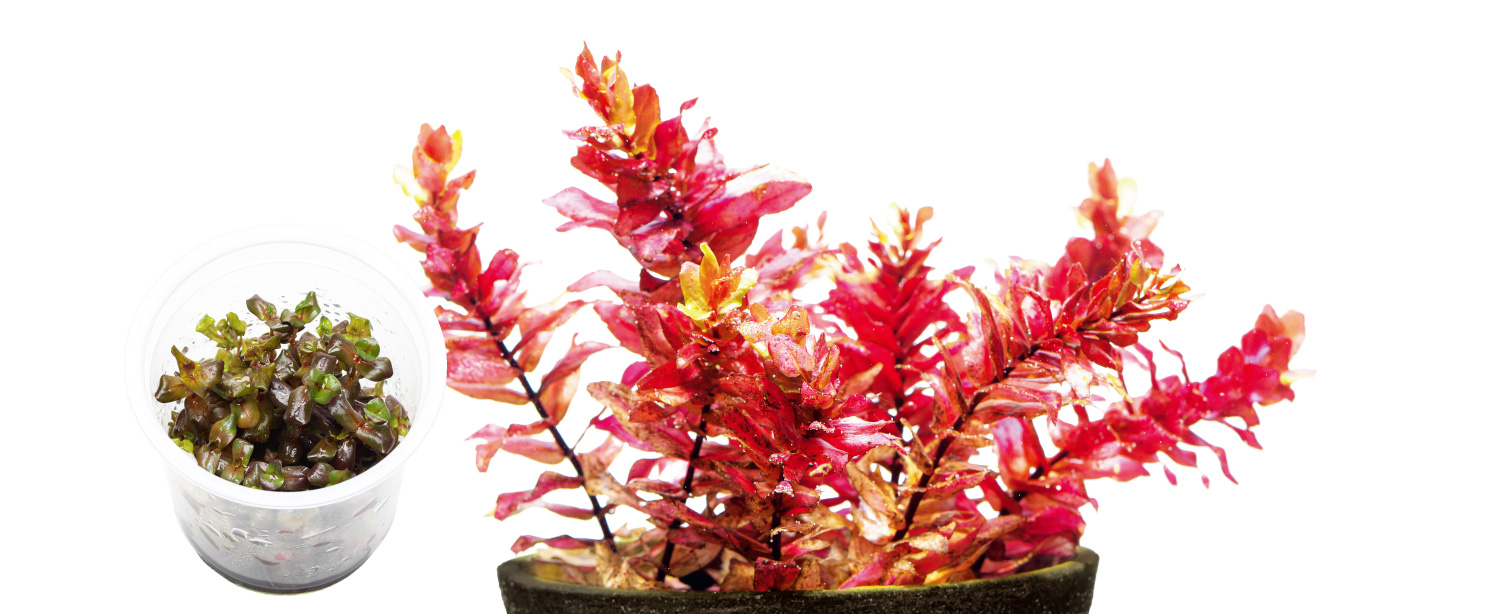
BIO Mizukusa no Mori Rotala macrandra
This Rotala macrandra has elegant beauty. By maintaining sufficient nutrients and slightly acidic water quality, leaves of this aquatic plant look healthy.
This Rotala macrandra has elegant beauty. By maintaining sufficient nutrients and slightly acidic water quality, leaves of this aquatic plant look healthy.
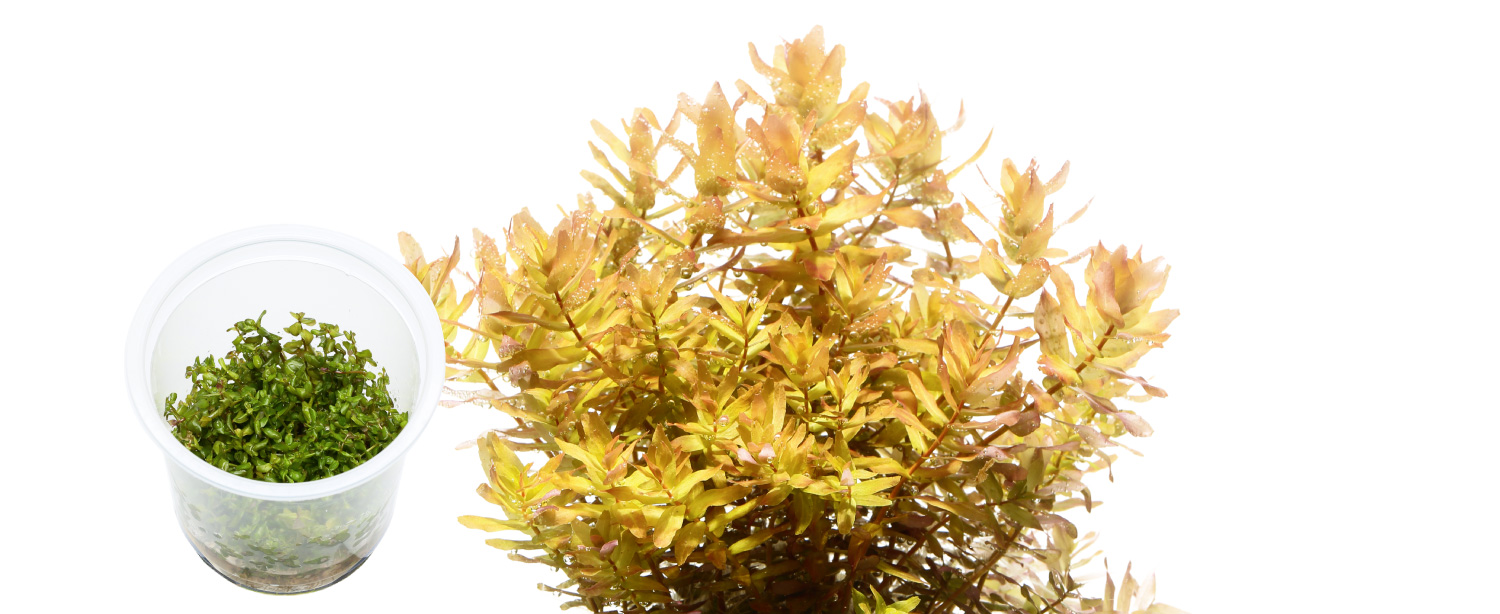
BIO Mizukusa no Mori Rotala macrandra ‘Green’
The round leaves with a soft impression are distinctive. It gives a soft atmosphere to the whole aquascape.
The round leaves with a soft impression are distinctive. It gives a soft atmosphere to the whole aquascape.
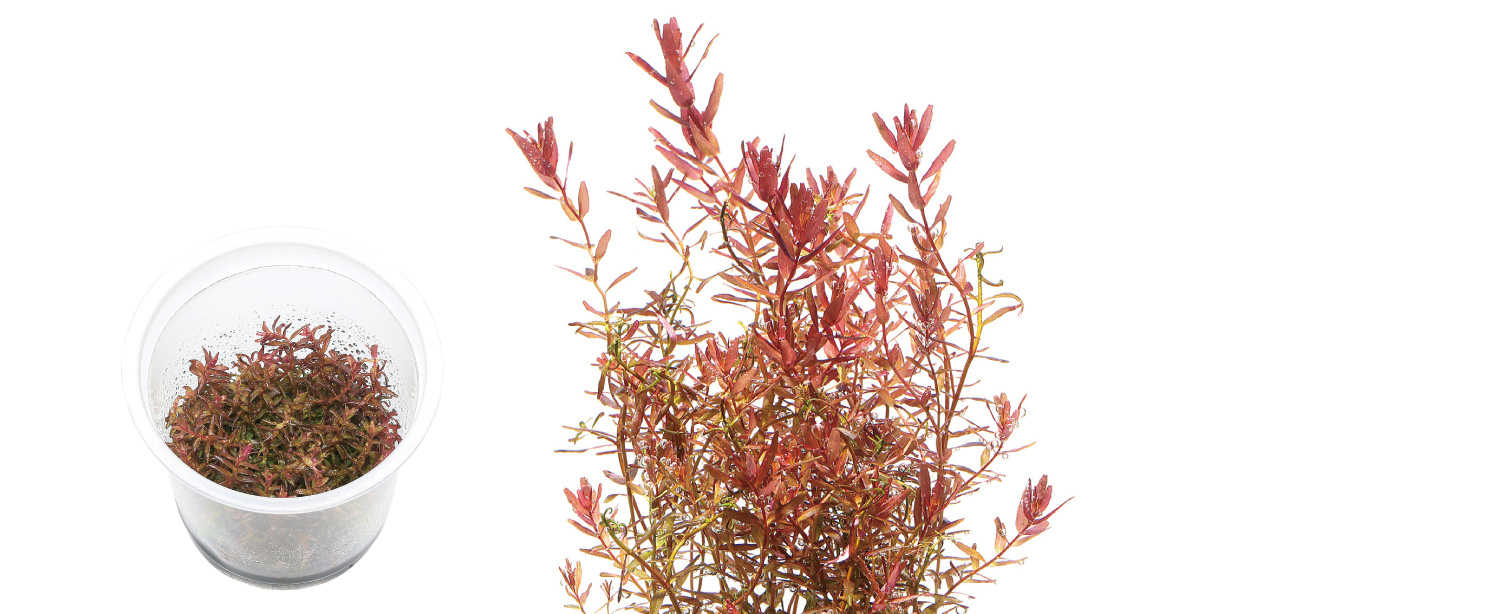
BIO Mizukusa no Mori Rotala macrandra ‘Mini’
Because it is smaller than the normal type Rotala macrandra, it is suitable for small aquarium tanks as a red stem plant. The slightly strong red color looks beautiful.
Because it is smaller than the normal type Rotala macrandra, it is suitable for small aquarium tanks as a red stem plant. The slightly strong red color looks beautiful.
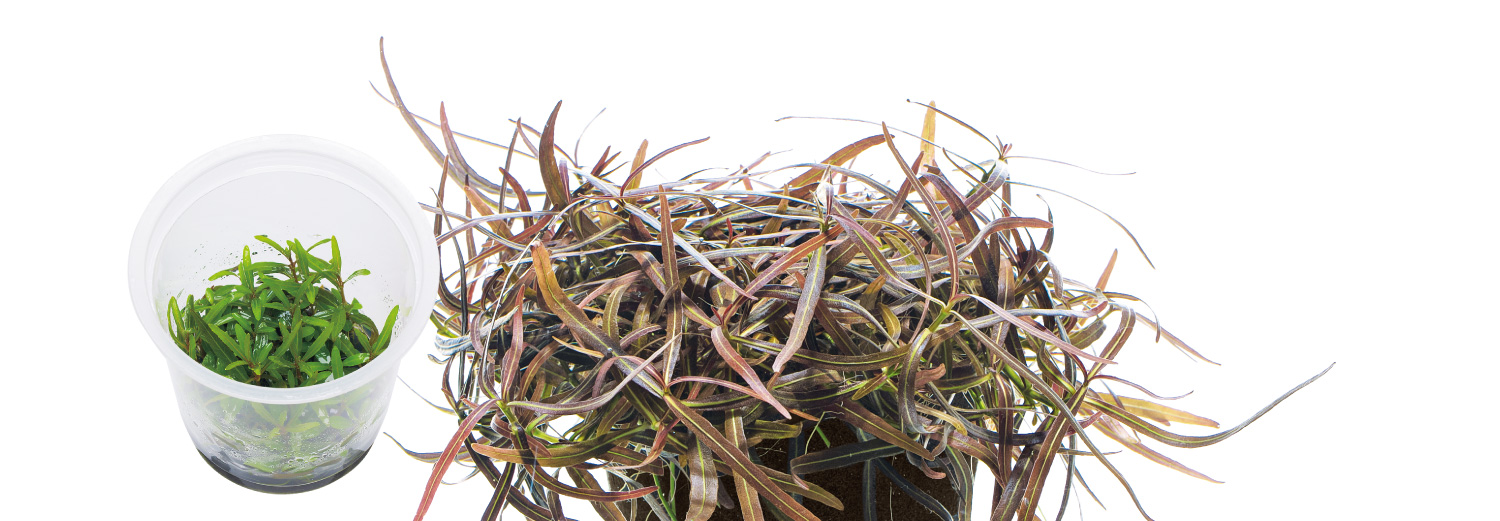
BIO Mizukusa no Mori Hygrophila sp. ‘Araguaya Red Sharp’
Its thin leaves with hint of red and the short look will be a good focal point in the mid-ground. And it gives more range to layouts.
Its thin leaves with hint of red and the short look will be a good focal point in the mid-ground. And it gives more range to layouts.
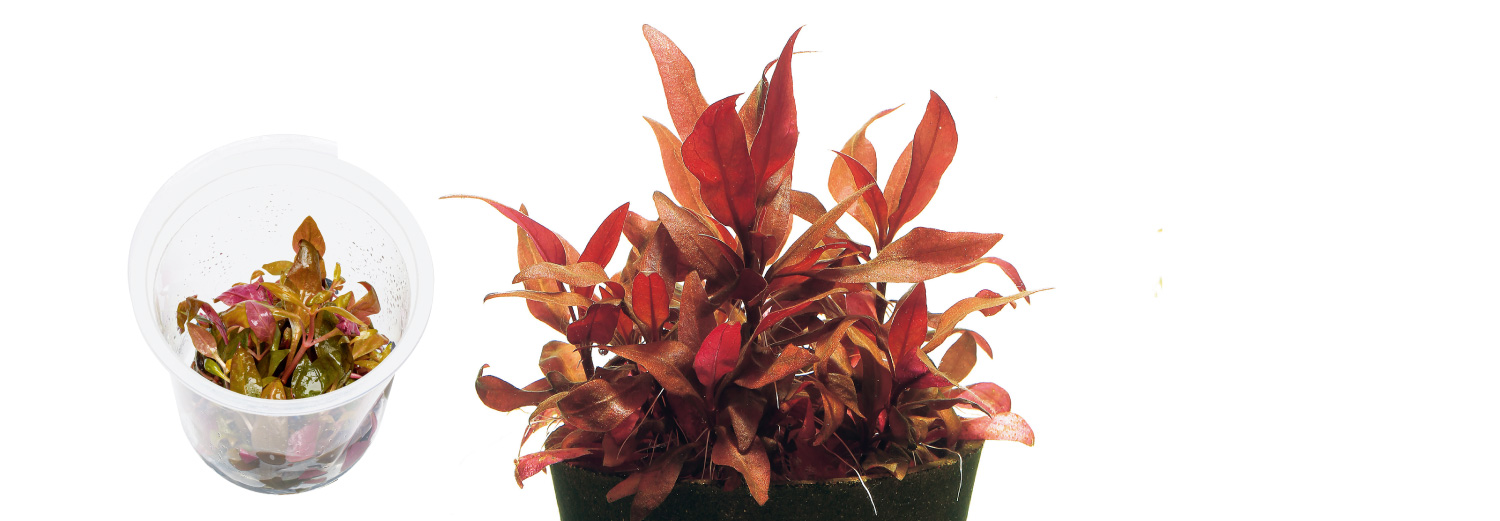
BIO Mizukusa no Mori Alternanthera reineckii ‘Mini’
It is a small version of vigorous Alternanthera reineckii. The bright red purple color is a good accent. It is necessary to be careful with feeding damages by shrimps.
It is a small version of vigorous Alternanthera reineckii. The bright red purple color is a good accent. It is necessary to be careful with feeding damages by shrimps.
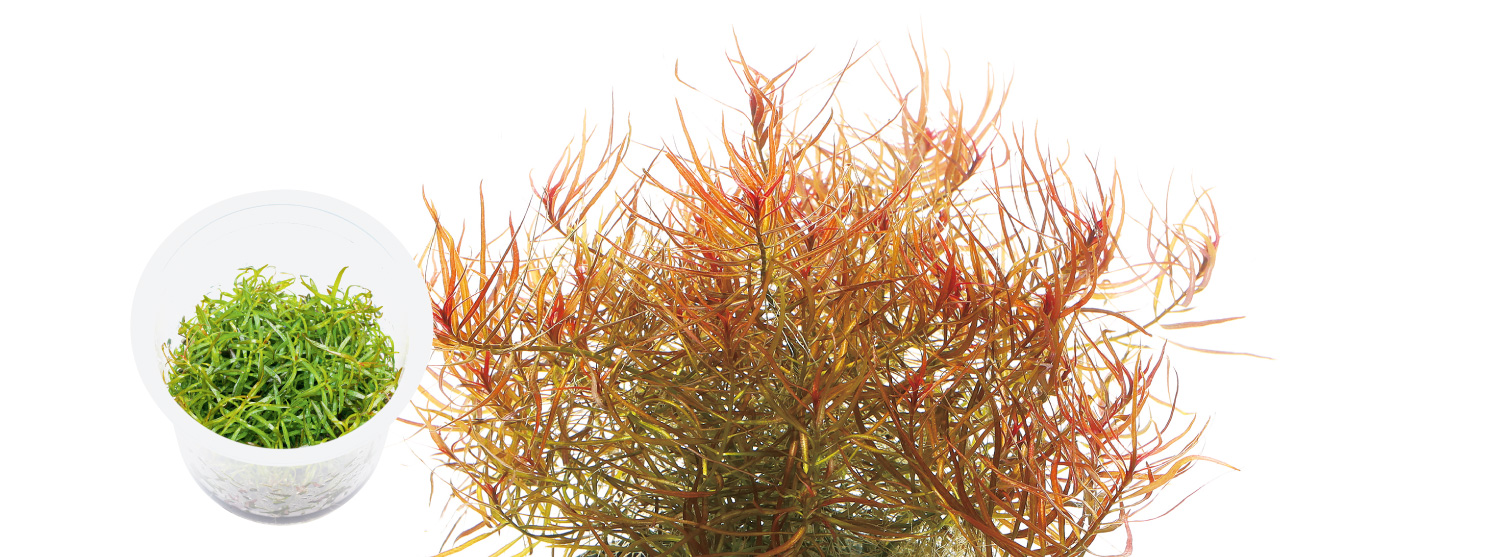
BIO Mizukusa no Mori Ludwigia arcuata
There is no other red stem plant with such fine leaves that is so well suited for aquascaping. Tips for success is not to make it too dense, and to add ECA Plus appropriately.
There is no other red stem plant with such fine leaves that is so well suited for aquascaping. Tips for success is not to make it too dense, and to add ECA Plus appropriately.
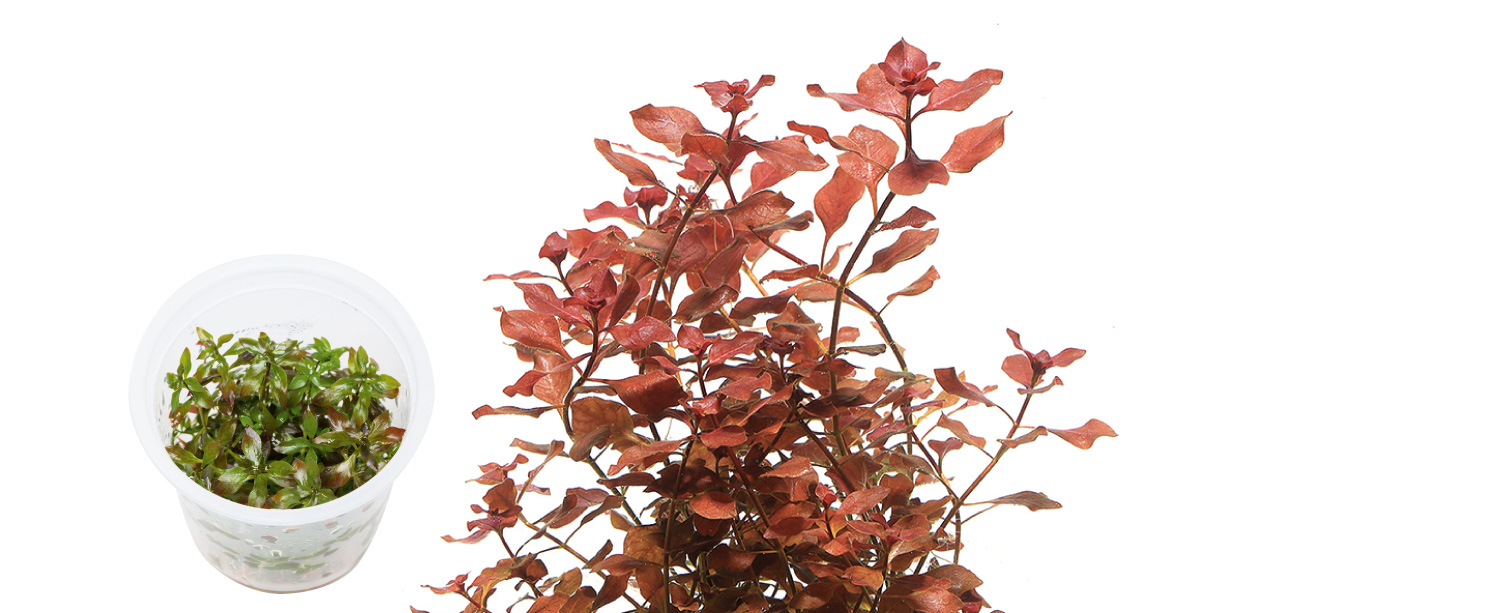
BIO Mizukusa no Mori Ludwigia repens ‘Super Red’
It is a beautiful species having the whole plant in strong crimson. It shows its maximum beauty with sufficient amount of CO2 and light.
It is a beautiful species having the whole plant in strong crimson. It shows its maximum beauty with sufficient amount of CO2 and light.
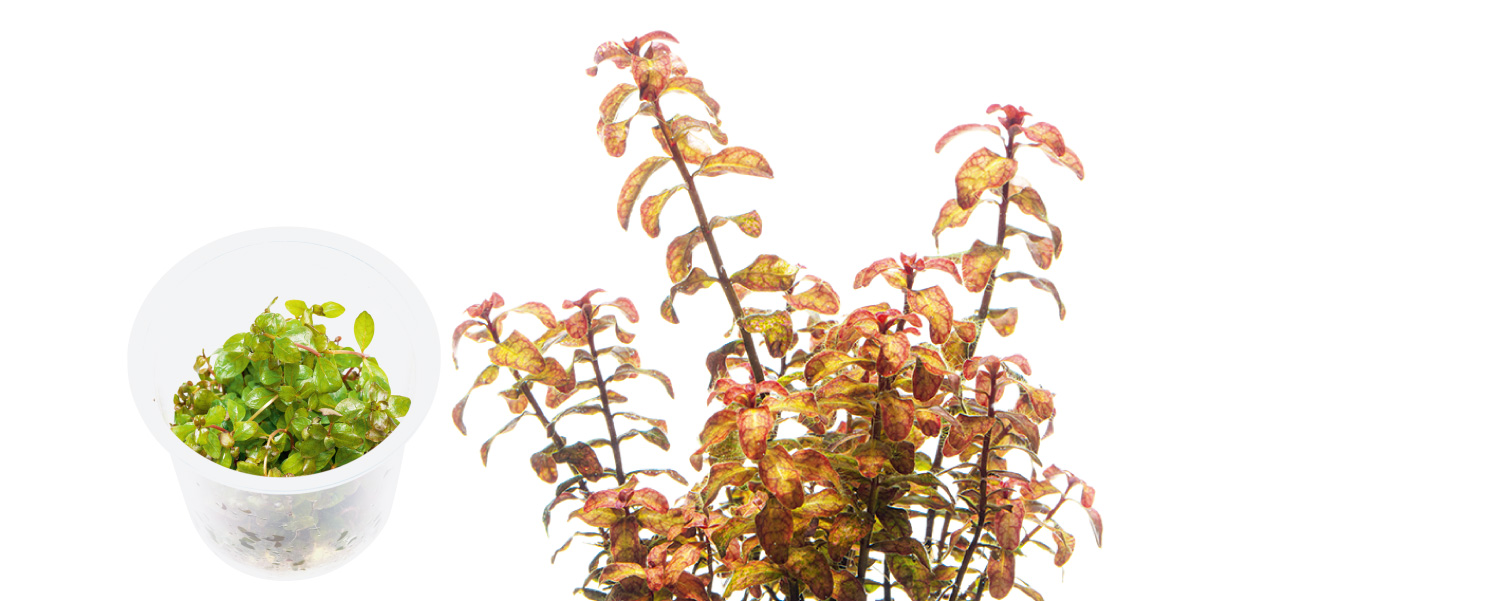
BIO Mizukusa no Mori Ludwigia senegalensis
This Ludwigia is native to Africa. It develops leaves in orange to red, and leaf veins clearly emerge like a pattern.
This Ludwigia is native to Africa. It develops leaves in orange to red, and leaf veins clearly emerge like a pattern.
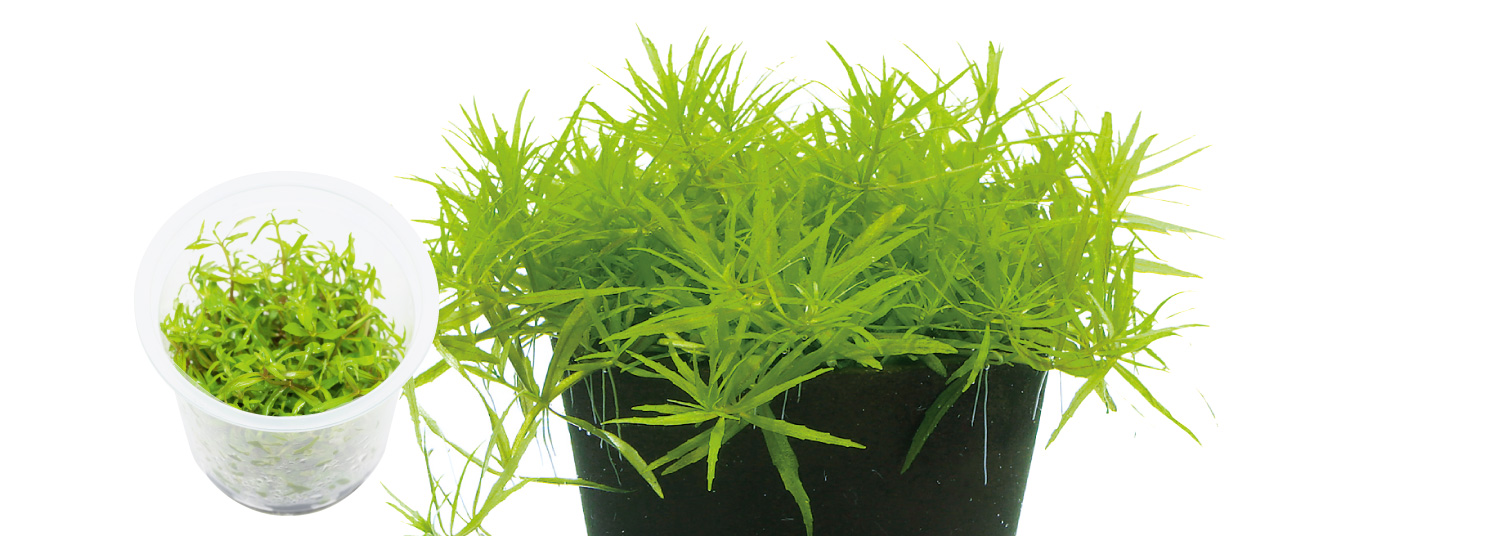
BIO Mizukusa no Mori Scrophulariaceae Limnophila sp.
Among mid-ground aquatic plants, a line of this aquatic plant can be created by trimming. It is easy to create any shapes you like.
Among mid-ground aquatic plants, a line of this aquatic plant can be created by trimming. It is easy to create any shapes you like.
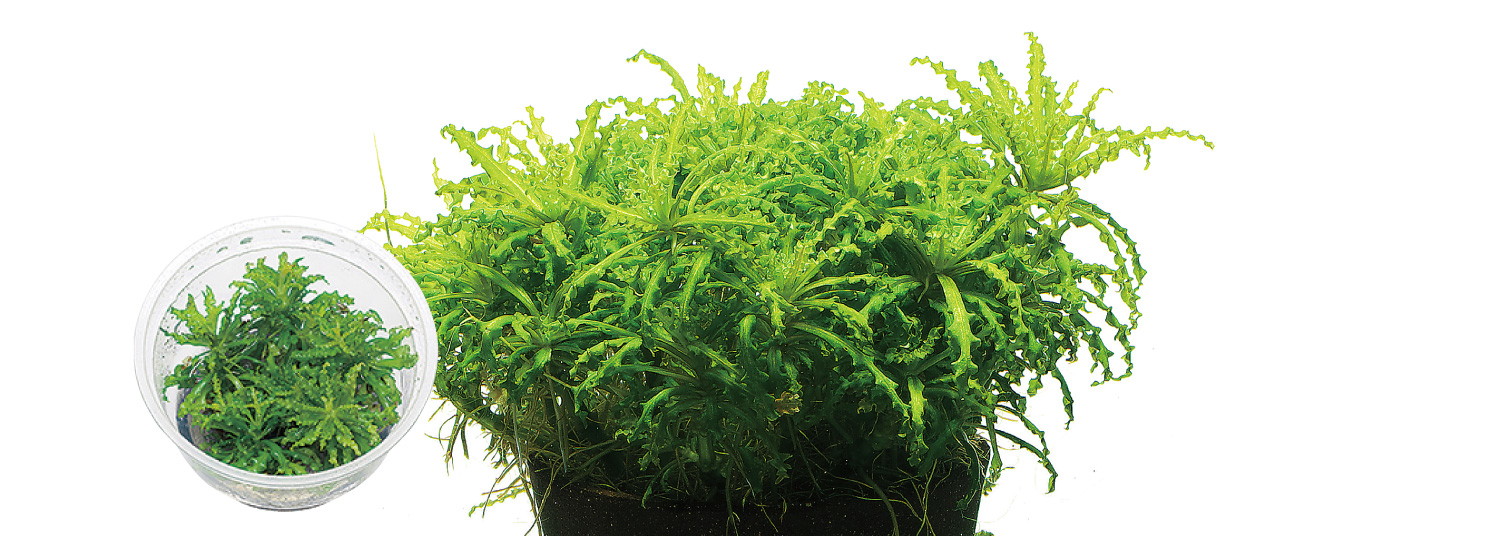
BIO Mizukusa no Mori Pogostemon helferi
It develops very wavy leaves radially. Because it tends to crawl while growing, it does not grow much in the vertical direction. Therefore, it should be planted in areas from foreground to mid-ground.
It develops very wavy leaves radially. Because it tends to crawl while growing, it does not grow much in the vertical direction. Therefore, it should be planted in areas from foreground to mid-ground.
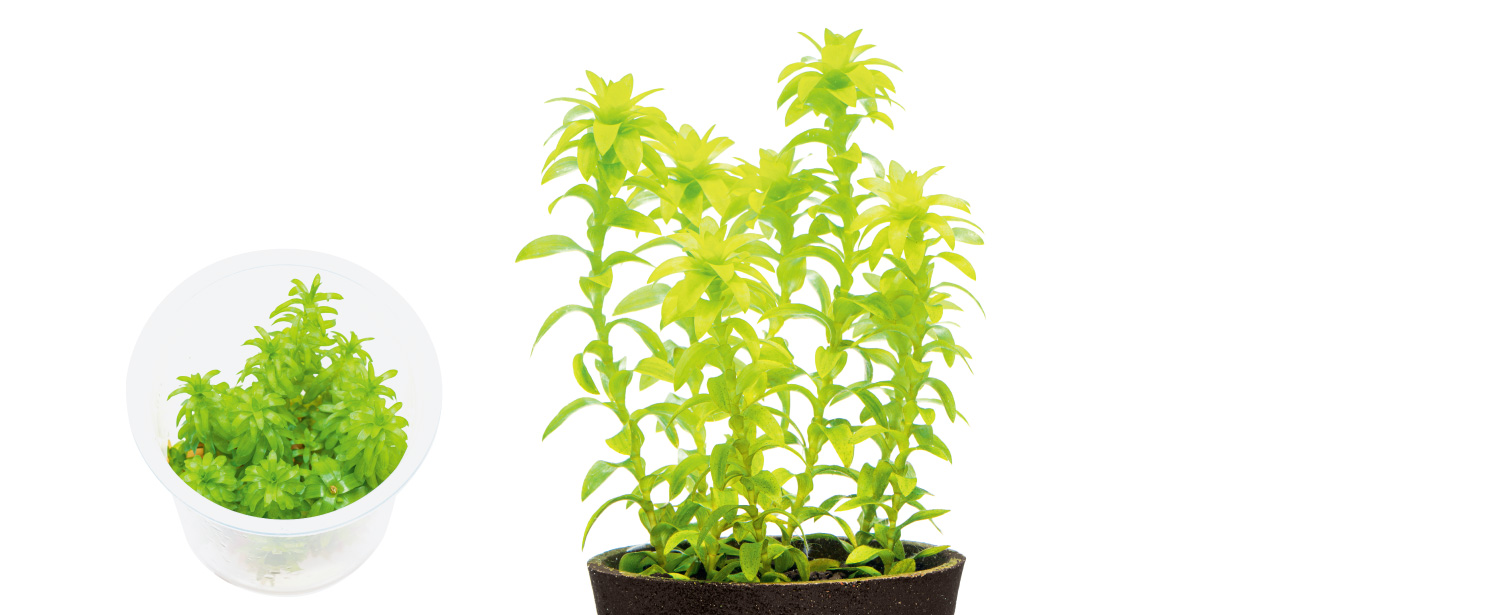
BIO Mizukusa no Mori Tonina fluviatilis
The way its leaves grow perpendicularly in spiral is beautiful. It is important to grow in a slightly acidic water condition with low hardness.
The way its leaves grow perpendicularly in spiral is beautiful. It is important to grow in a slightly acidic water condition with low hardness.
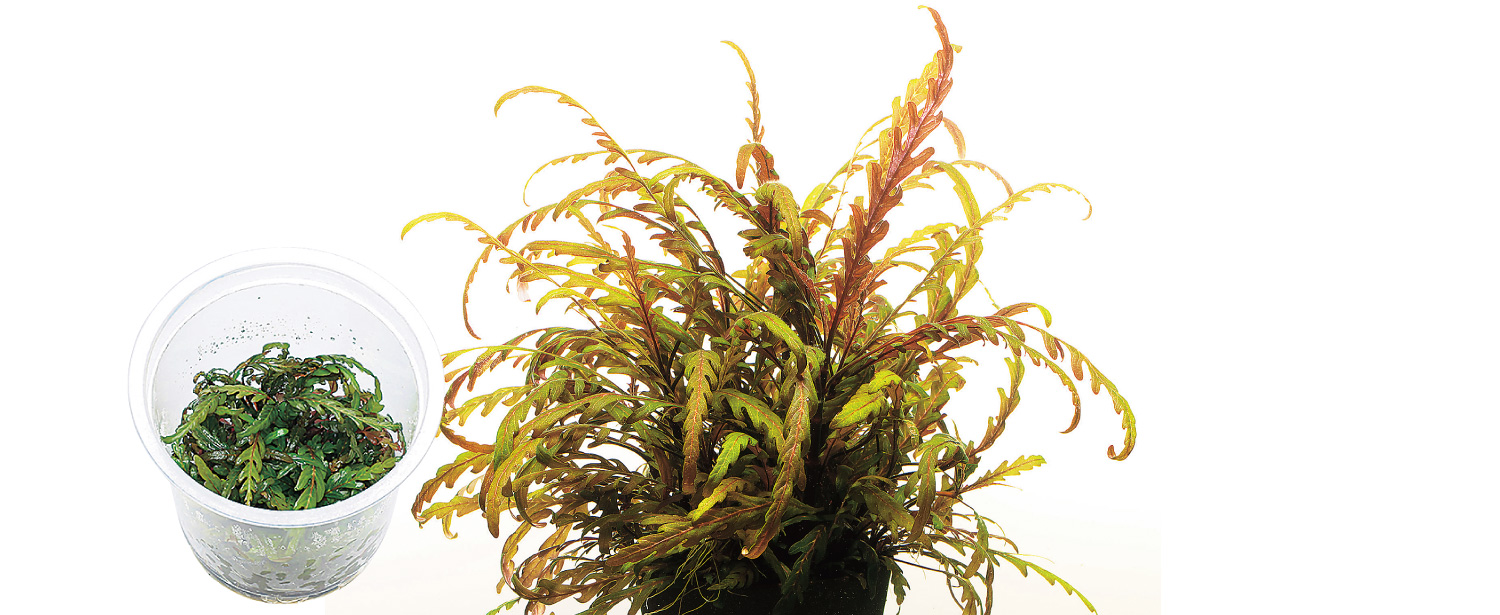
BIO Mizukusa no Mori Hygrophila pinnatifida
It is highly versatile because it is gorgeous and easy to grow. Because it is also epiphytic, it can be used for an aquascape without soil.
It is highly versatile because it is gorgeous and easy to grow. Because it is also epiphytic, it can be used for an aquascape without soil.
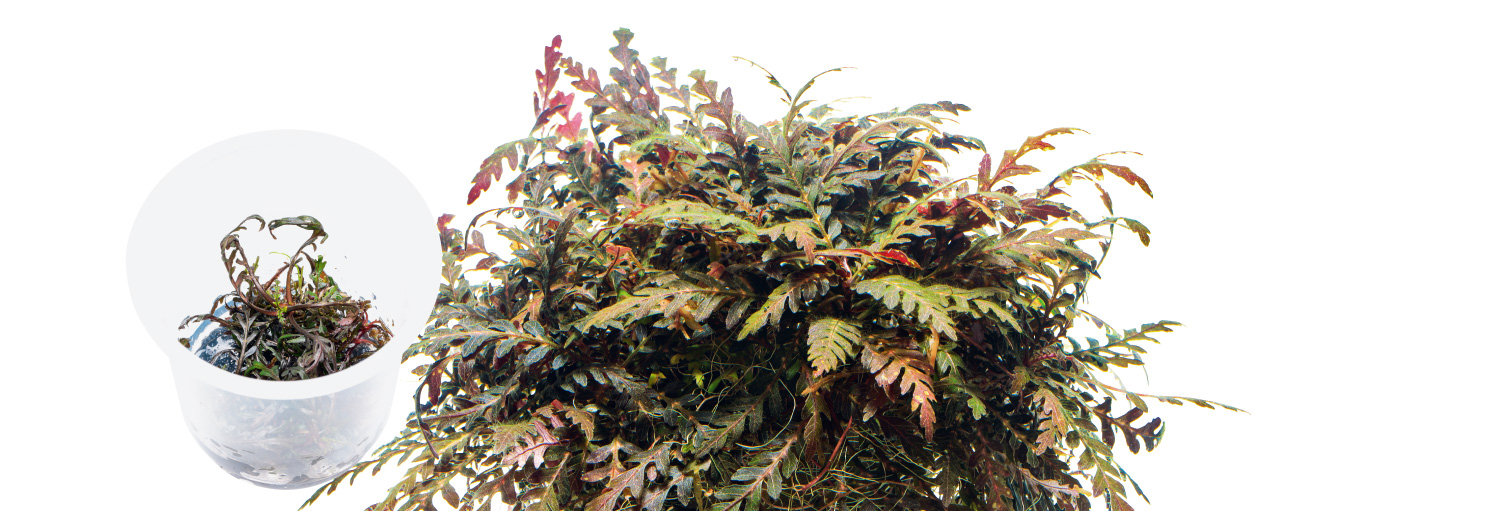
BIO Mizukusa no Mori Hygrophila pinnatifida ‘UK’
Its origin is different from Hygrophila pinnatifida. The deep slits and strong red color are distinctive. This type tends to crawl more.
Its origin is different from Hygrophila pinnatifida. The deep slits and strong red color are distinctive. This type tends to crawl more.
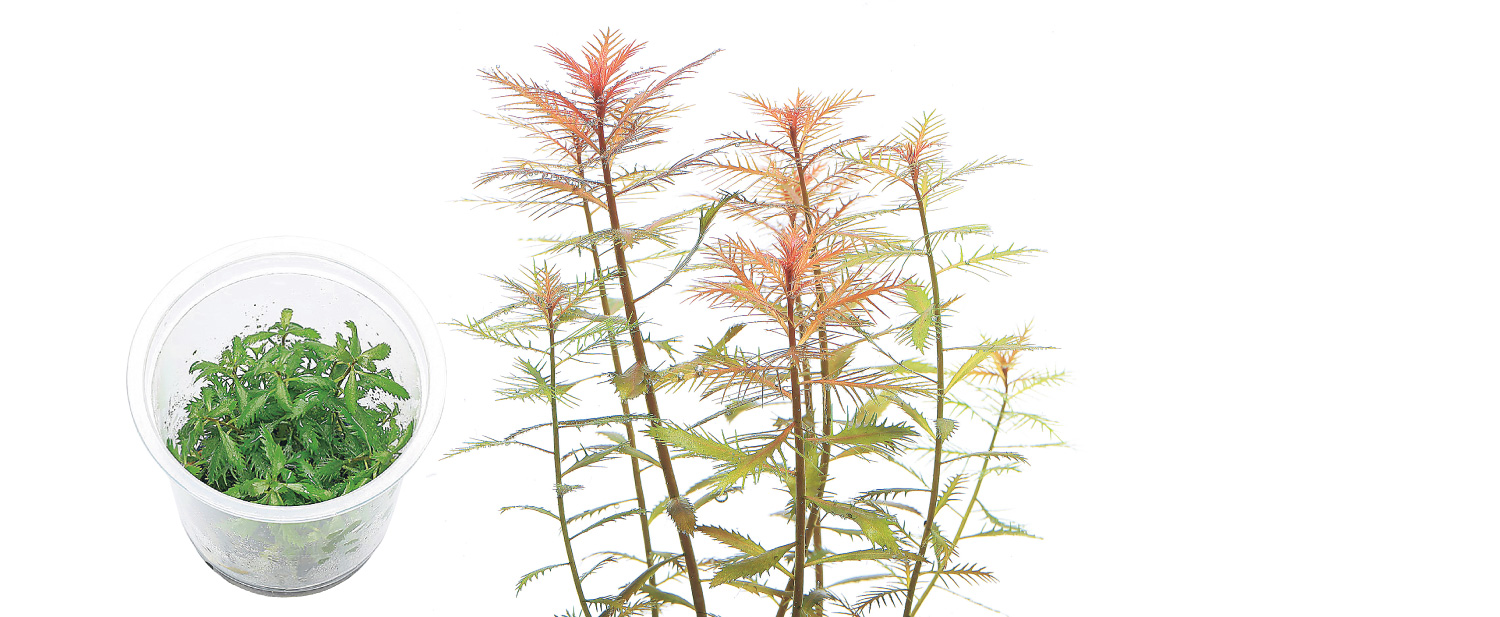
BIO Mizukusa no Mori Proserpinaca palustris
This species is closely related to Myriophyllum. The warm colored feather like aquatic leaves can be a fantastic addition to a gorgeous layout with stem plants.
This species is closely related to Myriophyllum. The warm colored feather like aquatic leaves can be a fantastic addition to a gorgeous layout with stem plants.
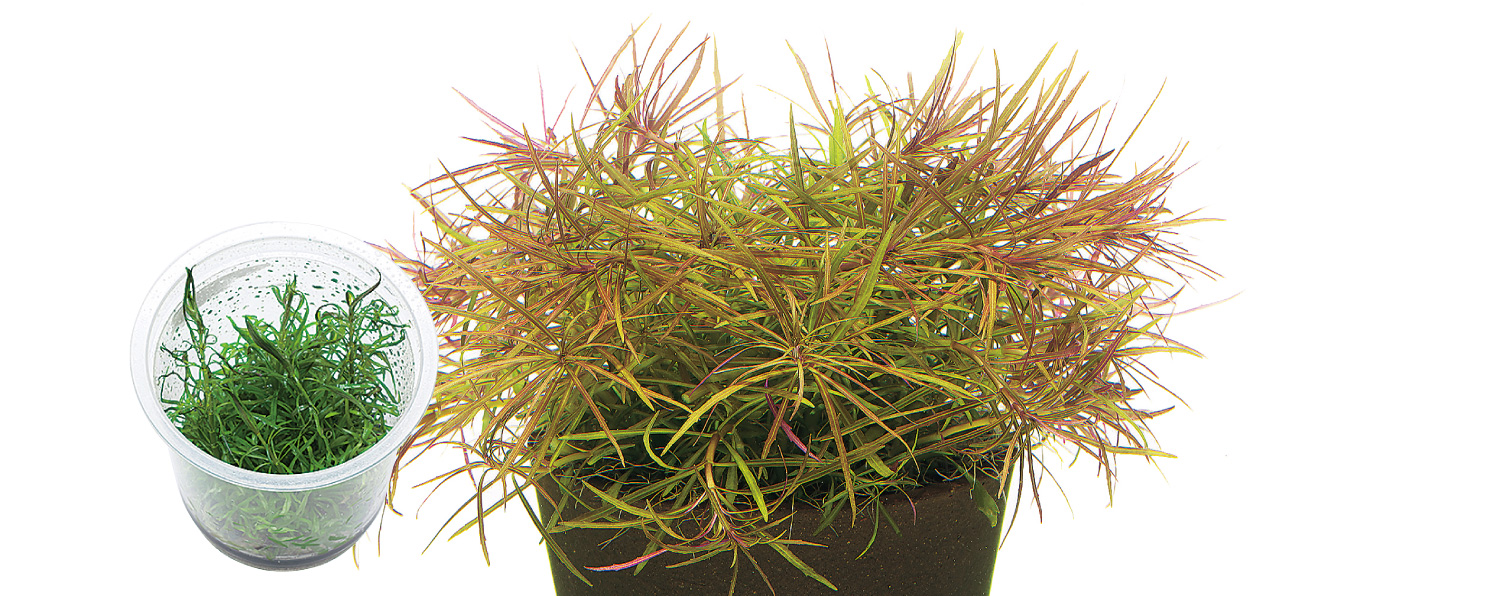
BIO Mizukusa no Mori Pogostemon stellatus ‘Dassen’
It develops bright green skinny leaves and grows vigorously. The bright red color on the back of the leaves can be a nice touch.
It develops bright green skinny leaves and grows vigorously. The bright red color on the back of the leaves can be a nice touch.
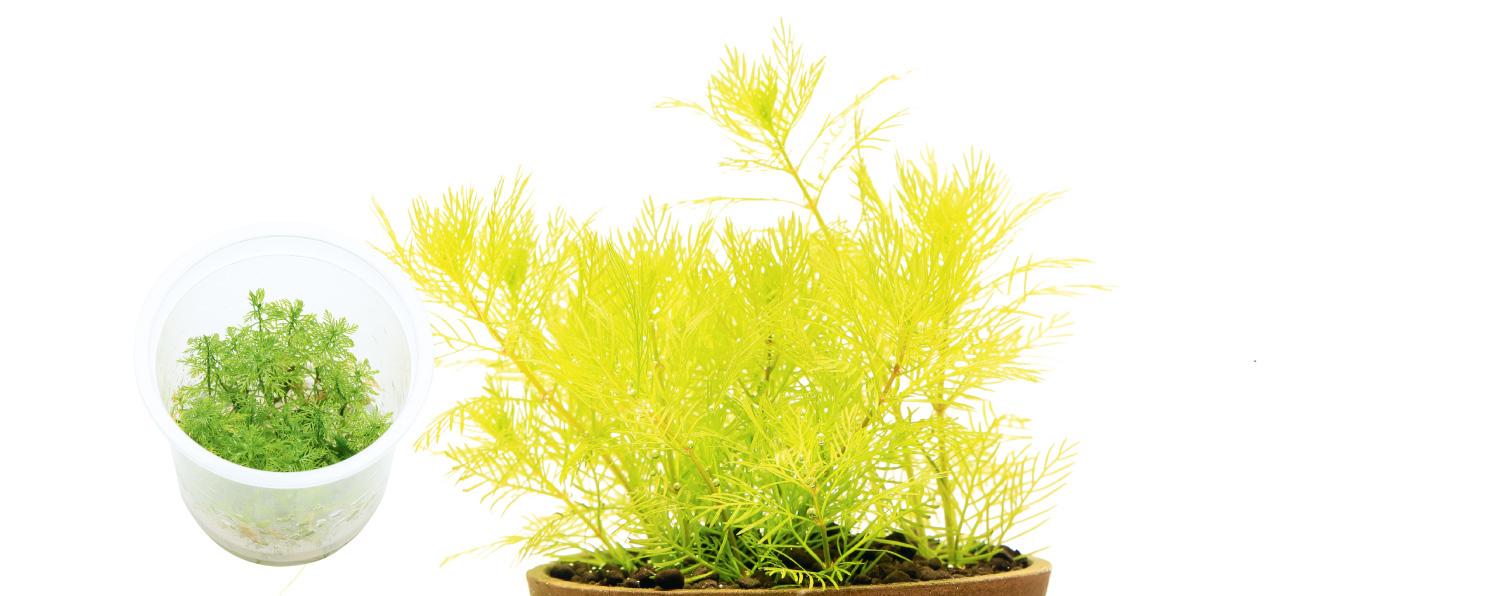
BIO Mizukusa no Mori Myriophyllum mattogrossense
Because of its vigorous growth, it is suitable for the mid-ground to background. It can have too much volume, so it is better to plant them in a narrower area than expected.
Because of its vigorous growth, it is suitable for the mid-ground to background. It can have too much volume, so it is better to plant them in a narrower area than expected.
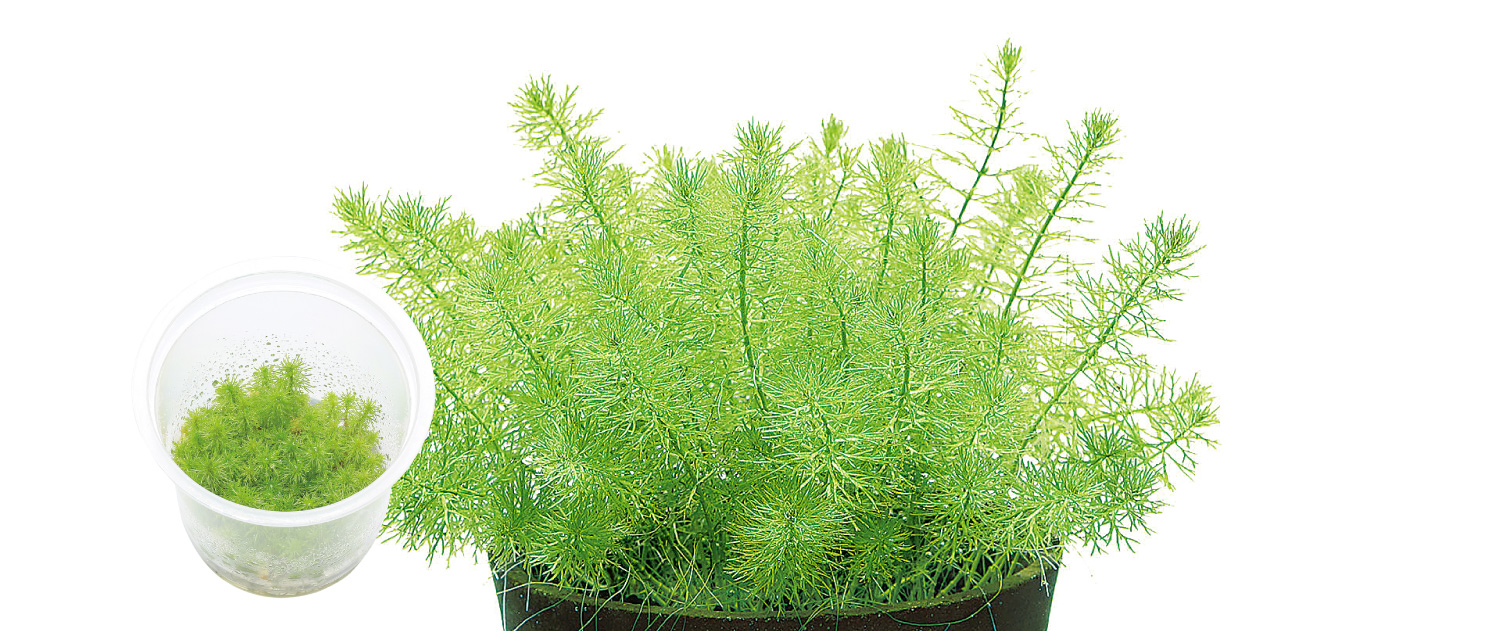
BIO Mizukusa no Mori Myriophyllum sp. ‘Guyana’
Fine leaves with deep slits grow densely. Because it tends to grow sideways, it is better to plant them with some extra space.
Fine leaves with deep slits grow densely. Because it tends to grow sideways, it is better to plant them with some extra space.
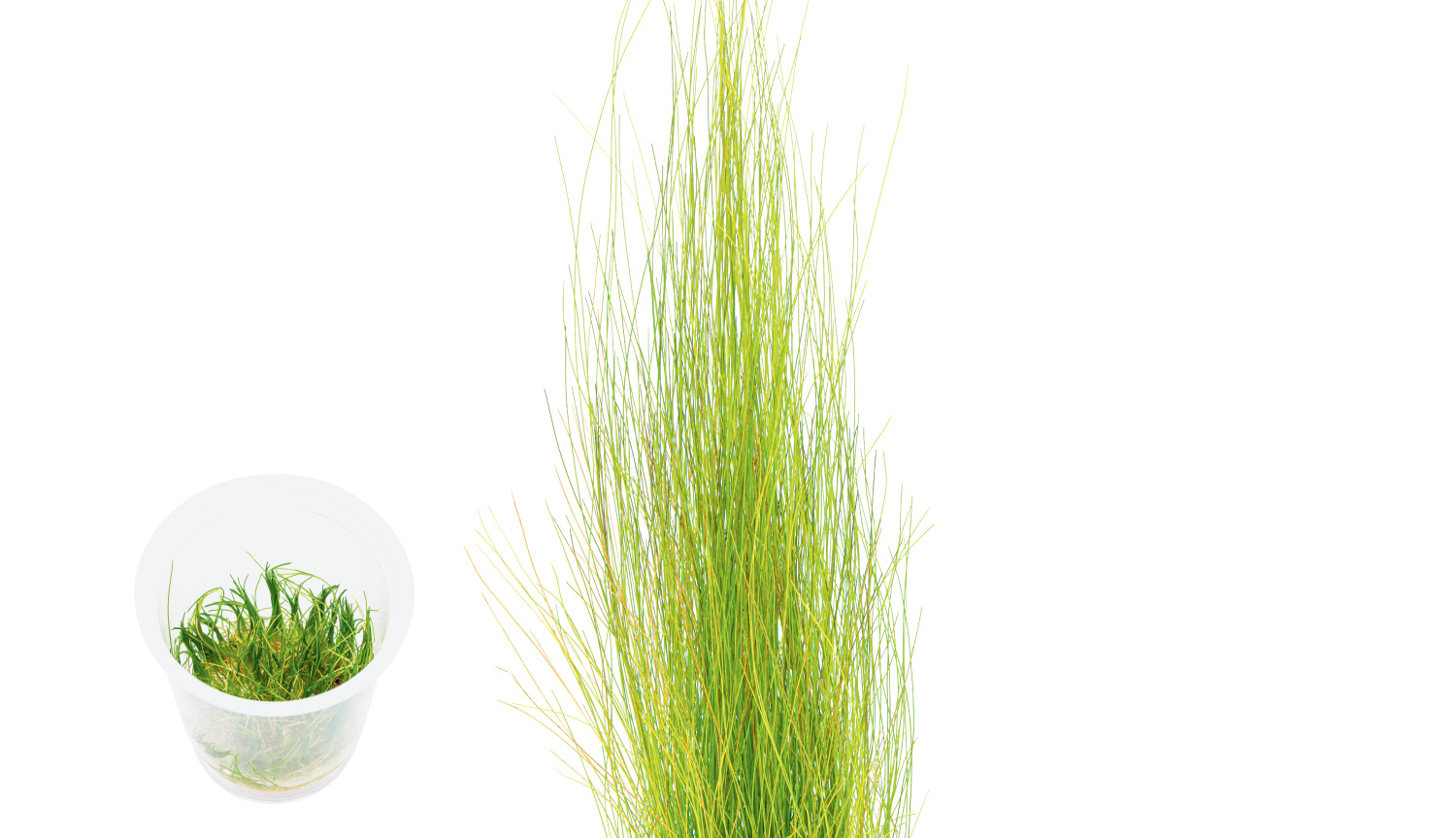
BIO Mizukusa no Mori Eleocharis montevidensis
The plant height will be about 25 to 30cm. Therefore, it is suitable for being planted in the background. However, it takes some time for the plant to grow fully.
The plant height will be about 25 to 30cm. Therefore, it is suitable for being planted in the background. However, it takes some time for the plant to grow fully.
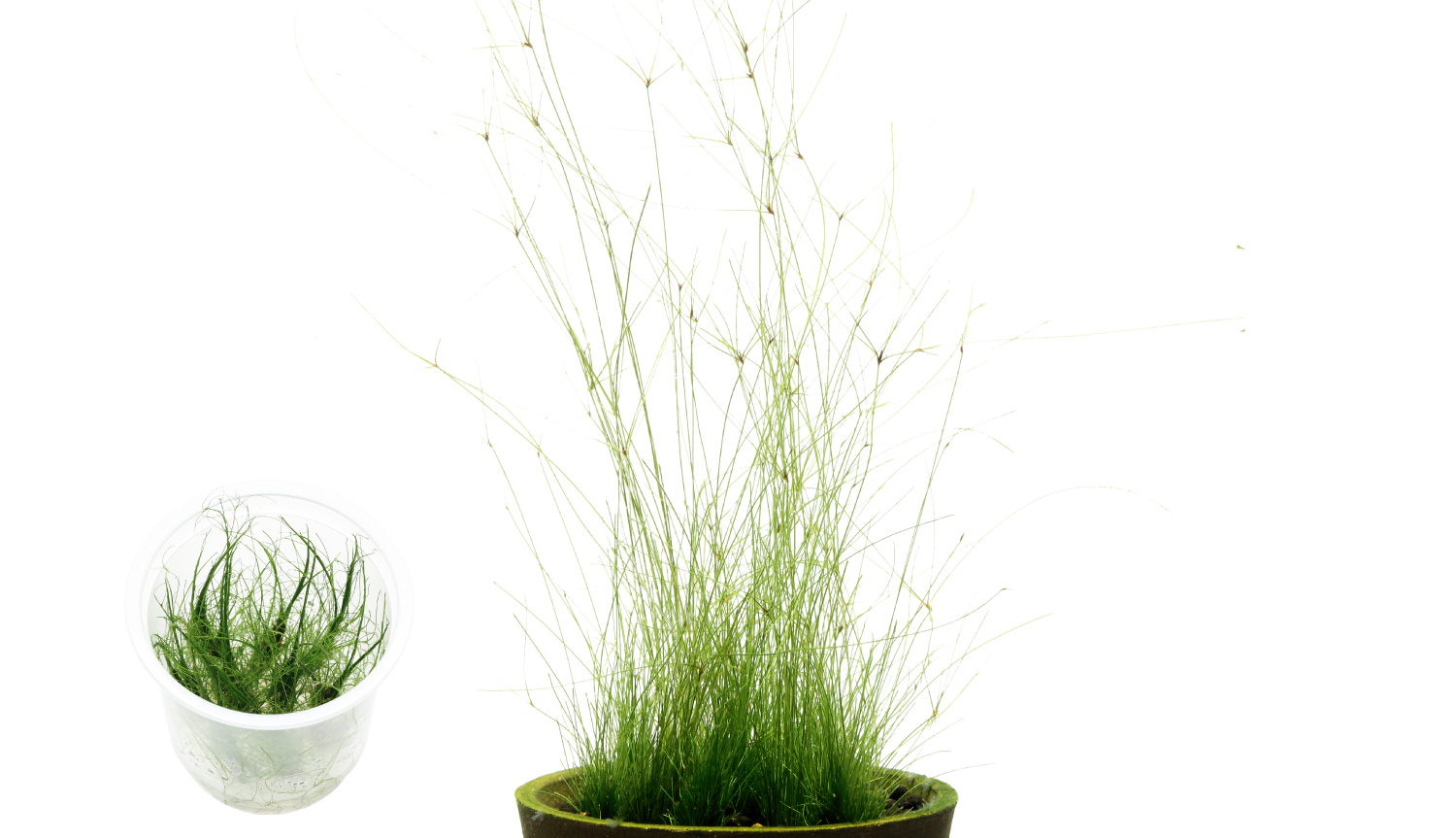
BIO Mizukusa no Mori Eleocharis vivipara
The green curtain like look is suitable for mixing with tape like aquatic plants too. The impression can be maintained by thinning out some shoots.
The green curtain like look is suitable for mixing with tape like aquatic plants too. The impression can be maintained by thinning out some shoots.
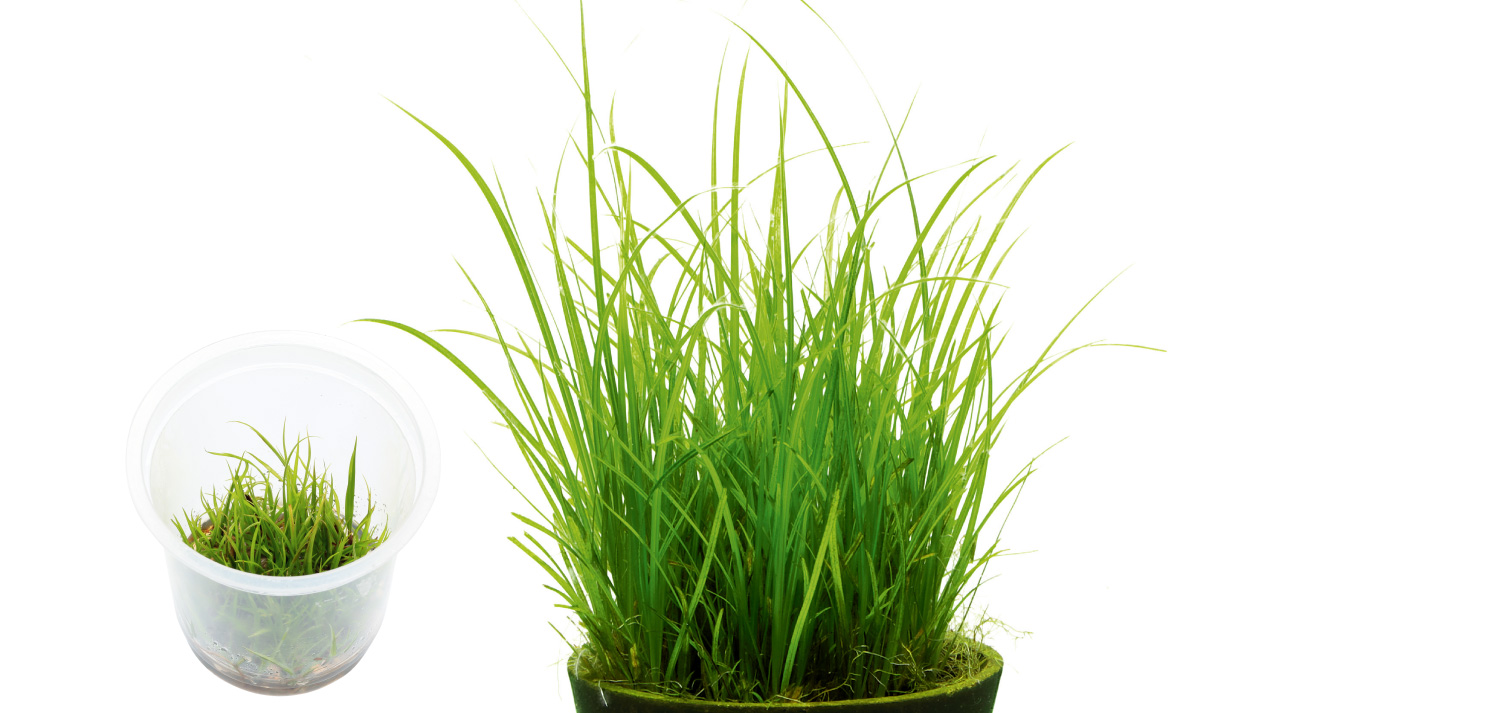
BIO Mizukusa no Mori Cyperus helferi
It matches well with stem plants. It has a summer plant feel. It is better to keep planting locations and the number of the plant modest.
It matches well with stem plants. It has a summer plant feel. It is better to keep planting locations and the number of the plant modest.
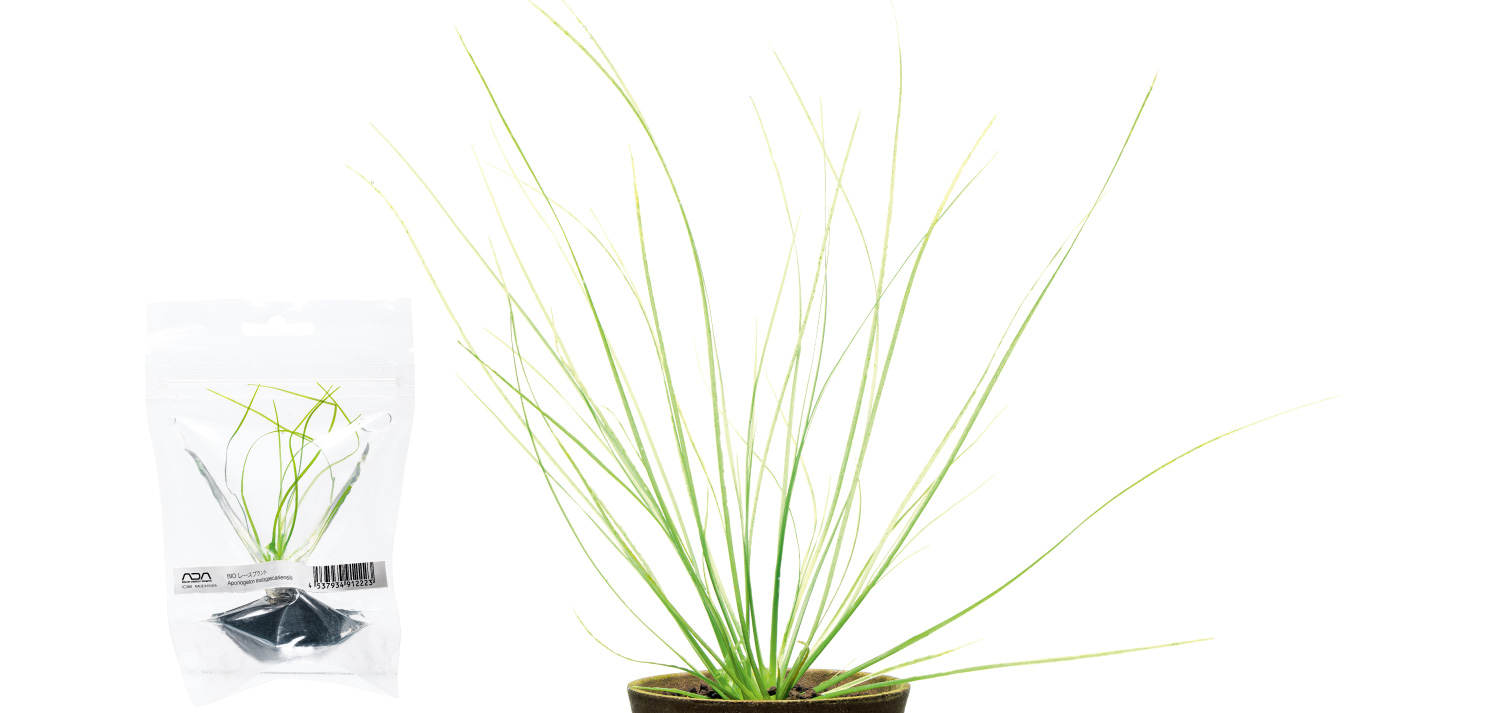
BIO Mizukusa no Mori Eriocaulon sp. ‘Social Feather Duster’
It is a type of Eriocaulon which is a rosette type growing in a tape shape. Because it doesn’t develop runners, it is easy to maintain for a long time.
It is a type of Eriocaulon which is a rosette type growing in a tape shape. Because it doesn’t develop runners, it is easy to maintain for a long time.
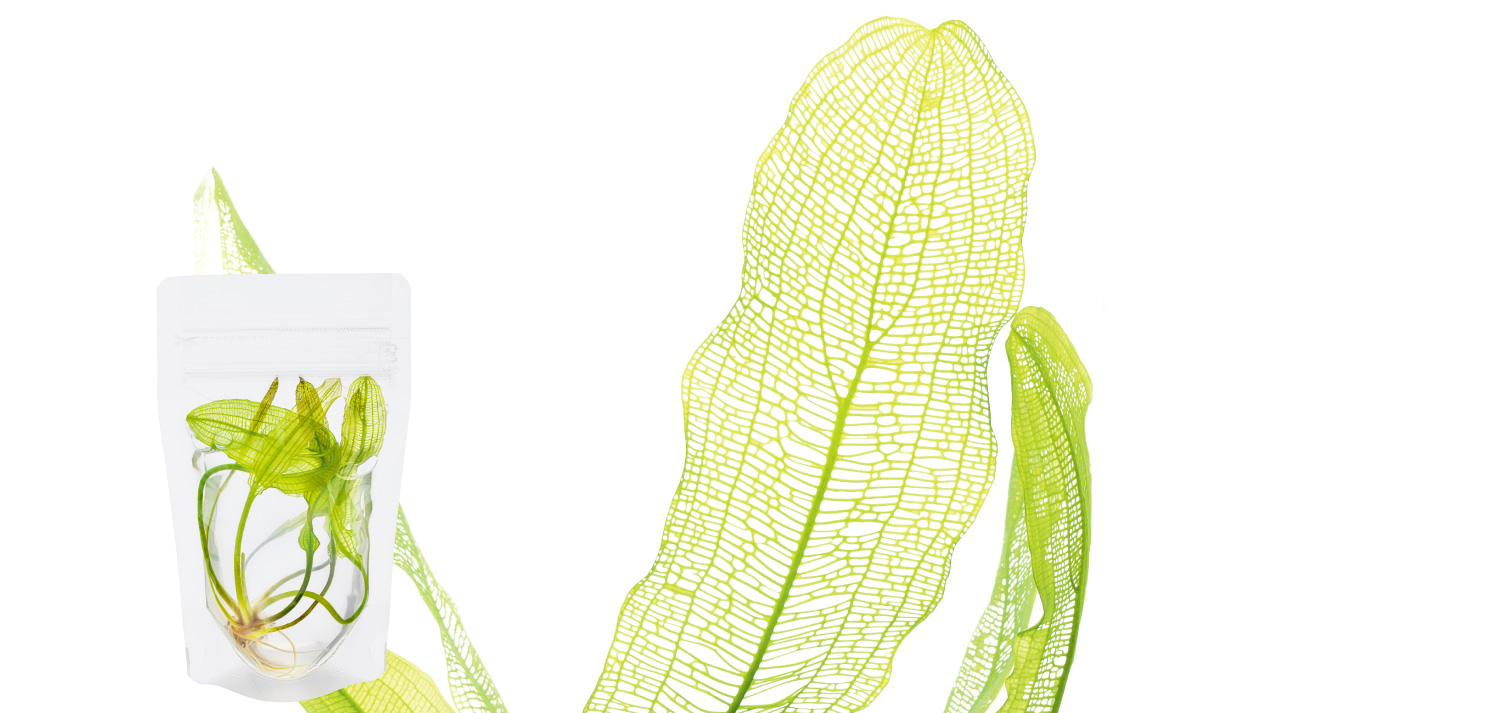
BIO Mizukusa no Mori Aponogeton madagascariensis To be released next spring
It is a rare aquatic plant native to Madagascar. The web like pattern is beautiful, and it is recommended to plant just by itself in Neo Glass Air.
It is a rare aquatic plant native to Madagascar. The web like pattern is beautiful, and it is recommended to plant just by itself in Neo Glass Air.
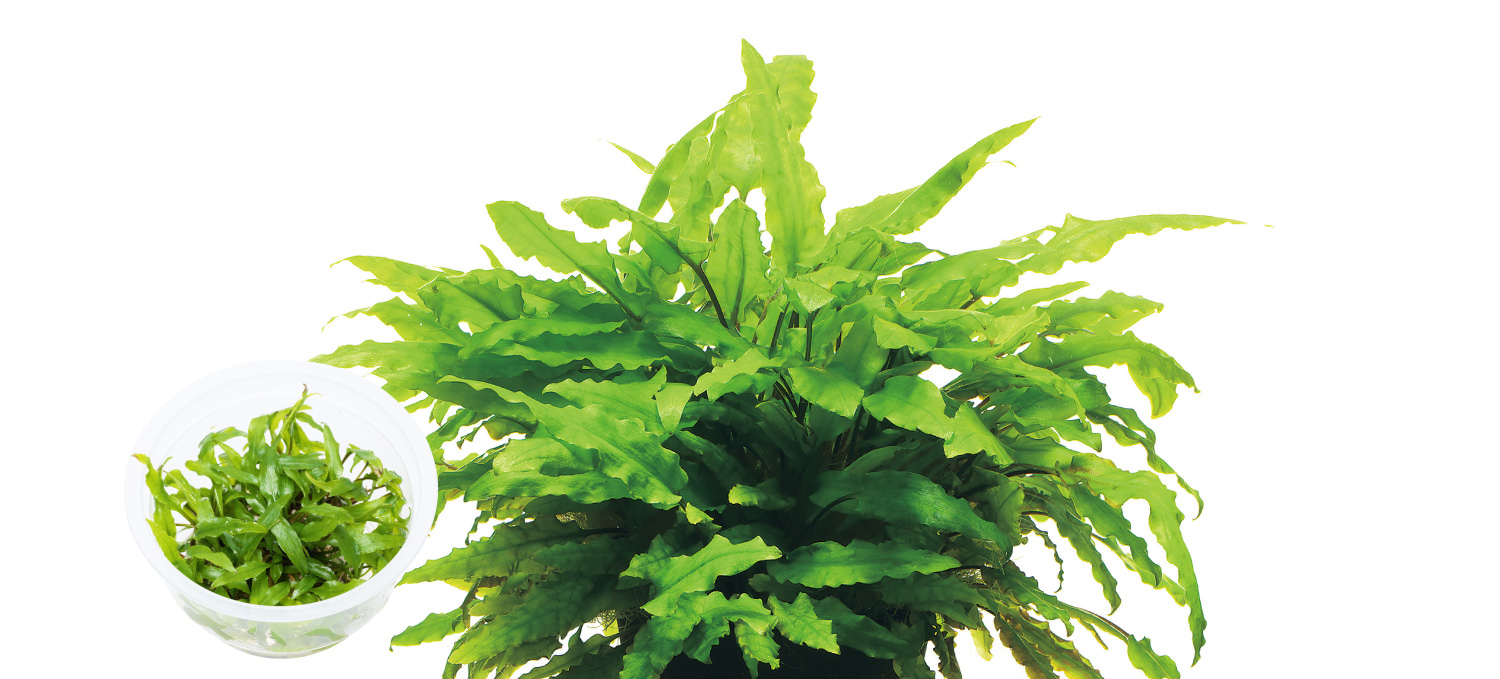
BIO Mizukusa no Mori Cryptocoryne wendtii ‘Green’
It is one of bright colored shade plants. Therefore, a layout can be created without giving dark impressions even if it is planted under the shadow of driftwood.
It is one of bright colored shade plants. Therefore, a layout can be created without giving dark impressions even if it is planted under the shadow of driftwood.
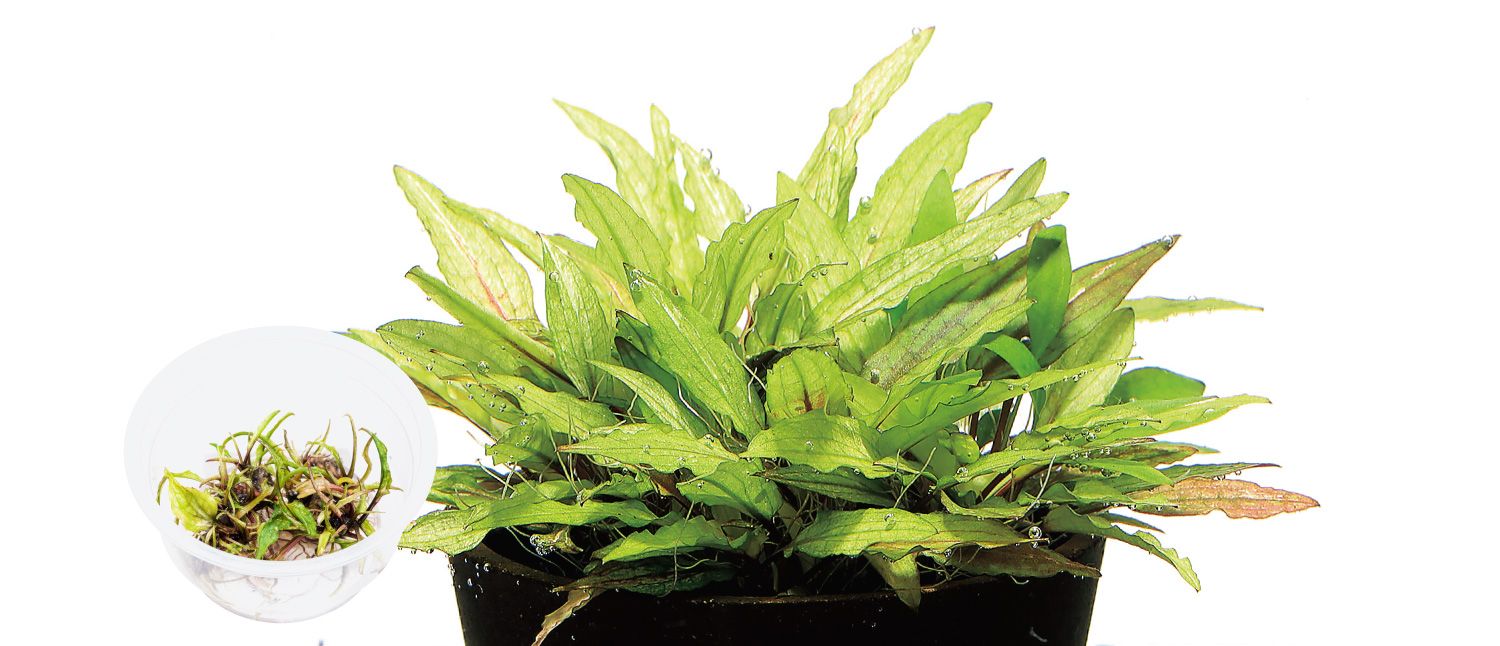
BIO Mizukusa no Mori Cryptocoryne wendtii ‘Green gecko’
The leaf margin has gentle waves. It creates a shrub in light green. The way it turns red partially when it is fully grown, is gorgeous.
The leaf margin has gentle waves. It creates a shrub in light green. The way it turns red partially when it is fully grown, is gorgeous.

BIO Mizukusa no Mori Cryptocoryne wendtii ‘Brown’
The whole smooth aquatic leaves turn brown. The handsome leaves give a subtle impression to an aquascape.
The whole smooth aquatic leaves turn brown. The handsome leaves give a subtle impression to an aquascape.

BIO Mizukusa no Mori Cryptocoryne wendtii ‘Tropica’
It is relatively large among Cryptocoryne wendtii. Dark brown leaves with rough texture go well with tropical fish from Asia.
It is relatively large among Cryptocoryne wendtii. Dark brown leaves with rough texture go well with tropical fish from Asia.
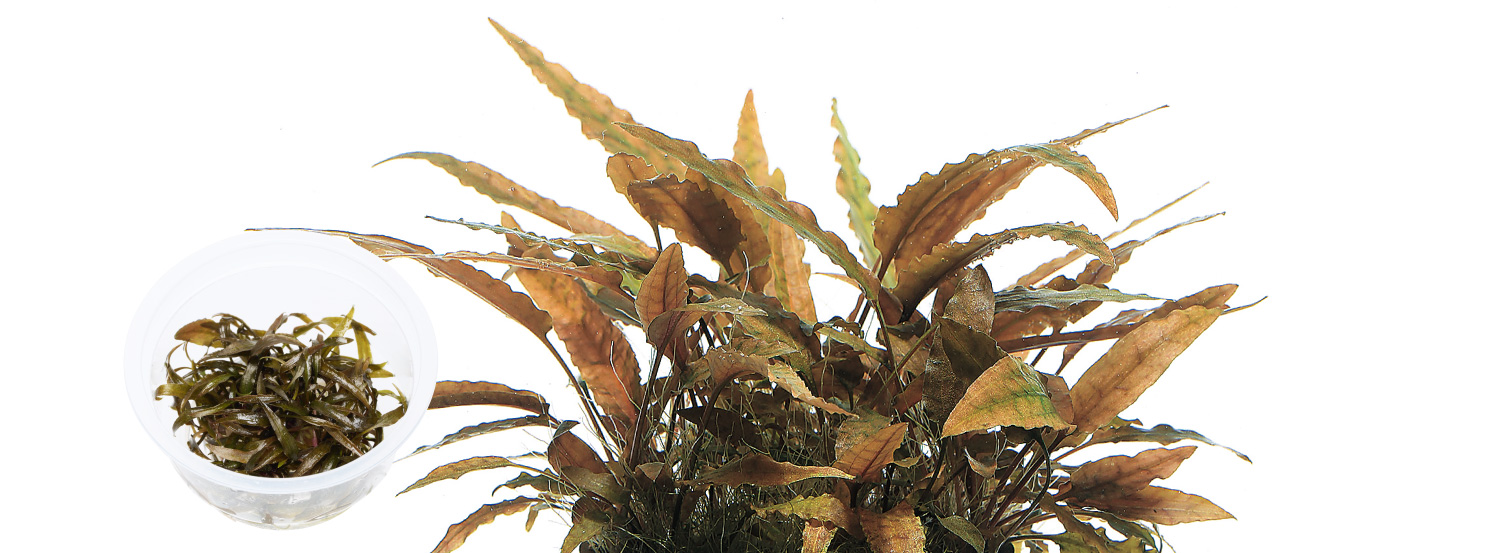
BIO Mizukusa no Mori BIO Cryptocoryne axelrodi
Slim leaves in cognac brown go well with layouts with driftwood. The color changes to red on the back of large leaves.
Slim leaves in cognac brown go well with layouts with driftwood. The color changes to red on the back of large leaves.

BIO Mizukusa no Mori Cryptocoryne parva
This small Cryptocoryne is rather rare in layouts and preferred by many professionals. Because it doesn’t develop runners, it is better to plant densely beforehand.
This small Cryptocoryne is rather rare in layouts and preferred by many professionals. Because it doesn’t develop runners, it is better to plant densely beforehand.

BIO Mizukusa no Mori Cryptocoryne lucens
It is a small Cryptocoryne suitable for aquarium tanks up to W60cm. The petioles are short and slim, and there is no other Cryptocoryne like Cryptocoryne Lucens.
It is a small Cryptocoryne suitable for aquarium tanks up to W60cm. The petioles are short and slim, and there is no other Cryptocoryne like Cryptocoryne Lucens.
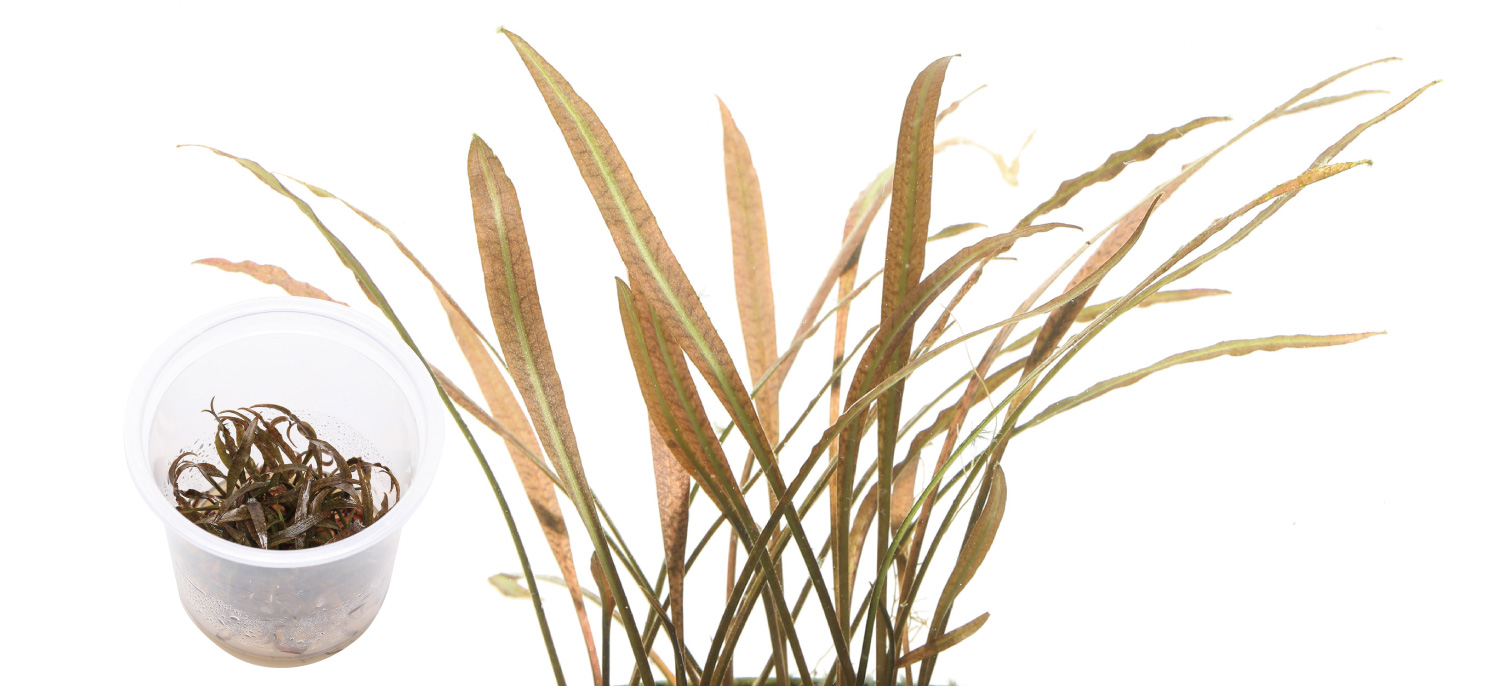
BIO Mizukusa no Mori Cryptocoryne spiralis ‘tiger’
It is a type of Cryptocoryne spiralis in dark rustic color with tiger stripes. It would be fun to enjoy its unique aura in Neo Glass Air.
It is a type of Cryptocoryne spiralis in dark rustic color with tiger stripes. It would be fun to enjoy its unique aura in Neo Glass Air.
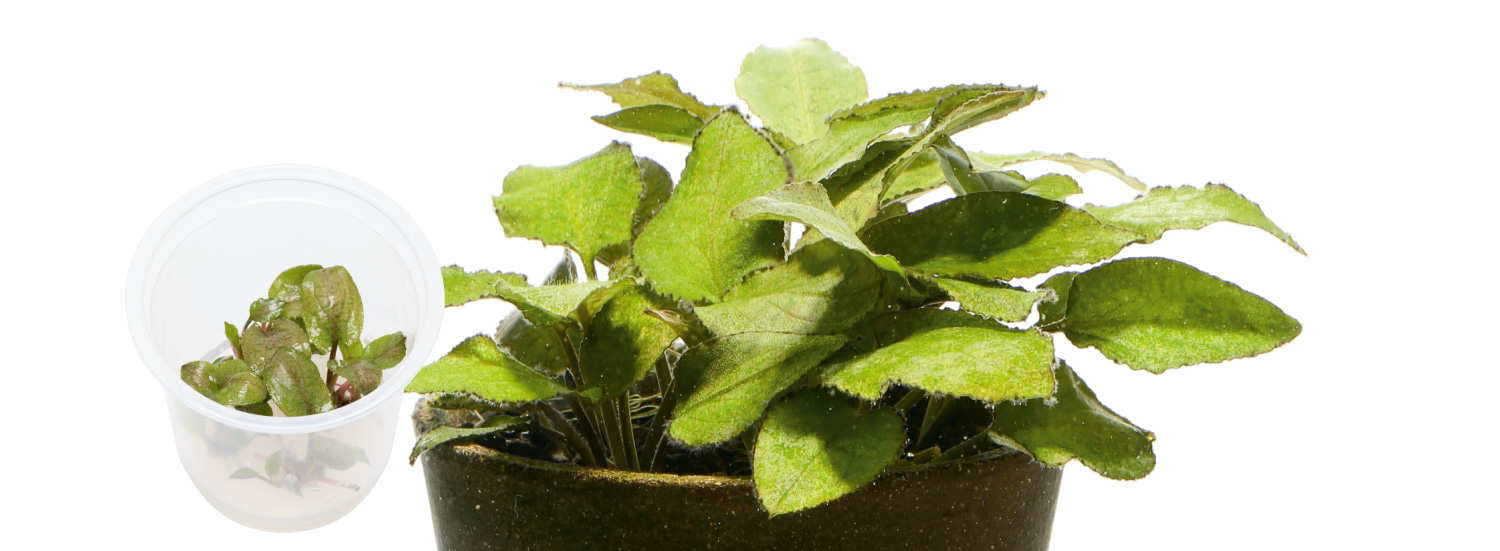
BIO Mizukusa no Mori Lagenandra keralensis
Leaves of this Lagenandra with hint of brown are slightly round. It is harder to melt than Cryptocoryne.
Leaves of this Lagenandra with hint of brown are slightly round. It is harder to melt than Cryptocoryne.
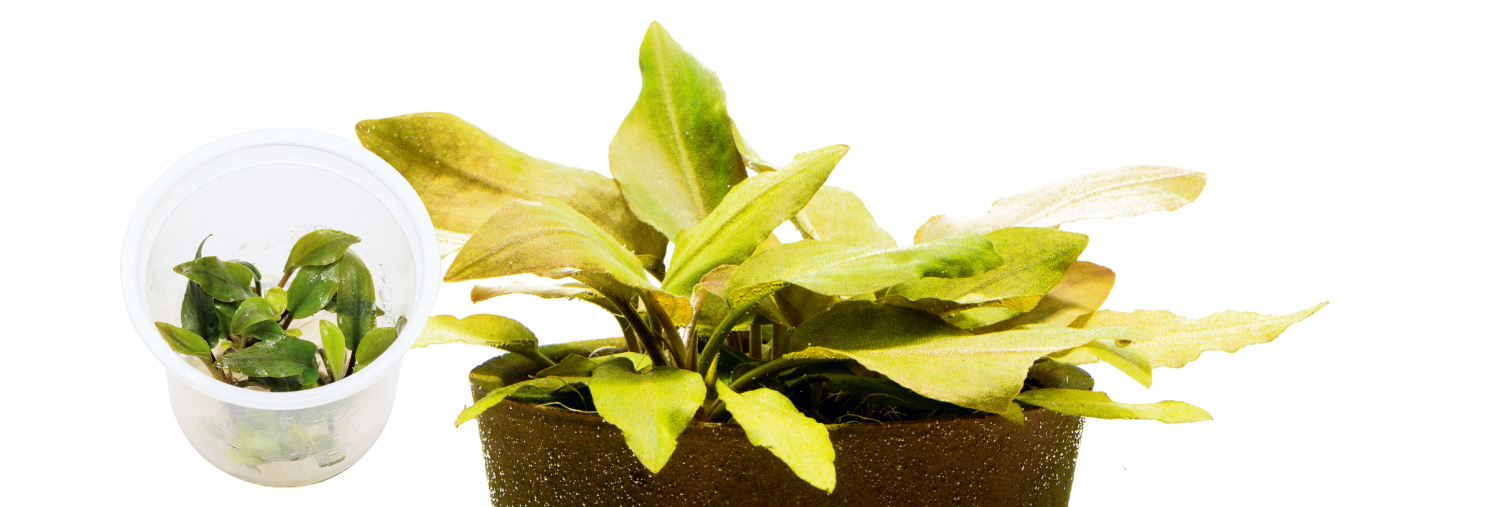
BIO Mizukusa no Mori Lagenandra meeboldii ‘Red’
This Lagenandra has beautiful leaves in brown with hint of red. By adding sufficient CO2, the red color gets emphasized.
This Lagenandra has beautiful leaves in brown with hint of red. By adding sufficient CO2, the red color gets emphasized.

BIO Mizukusa no Mori Lagenandra meeboldii ‘Green’
This Lagenandra develops bright green leaves. The unique bright green color does not exist in Cryptocoryne.
This Lagenandra develops bright green leaves. The unique bright green color does not exist in Cryptocoryne.

BIO Mizukusa no Mori Anubias barteri var. nana ‘Petite’
When it is planted serenely near Bolbitis, a natural feeling is created. It is also appealing that one cup contains so much.
When it is planted serenely near Bolbitis, a natural feeling is created. It is also appealing that one cup contains so much.

BIO Mizukusa no Mori Anubias barteri ‘Coffeefolia’
Key points include its deep green color and red of new buds. The handsome impression that other Anubias don’t have creates a wild feeling.
Key points include its deep green color and red of new buds. The handsome impression that other Anubias don’t have creates a wild feeling.

BIO Mizukusa no Mori Bucephalandra sp. ‘Sintang’
At a glance, it looks very similar to Anubias barteri var. nana ‘Petite’. The swaying leaf margin glowing in dull blue lures us into the inner part of Borneo.
At a glance, it looks very similar to Anubias barteri var. nana ‘Petite’. The swaying leaf margin glowing in dull blue lures us into the inner part of Borneo.

BIO Mizukusa no Mori Staurogyne repens
This aquatic plant in bright green grow slowly without becoming over-sized. It can smoothly connect from the foreground to mid-ground.
This aquatic plant in bright green grow slowly without becoming over-sized. It can smoothly connect from the foreground to mid-ground.

BIO Mizukusa no Mori Glossostigma elatinoides
Glossostigma is a star that has been in many aquascapes. It has been supporting the scenery of the W7m aquarium tank in Sumida Aquarium for about 10 years.
Glossostigma is a star that has been in many aquascapes. It has been supporting the scenery of the W7m aquarium tank in Sumida Aquarium for about 10 years.

BIO Mizukusa no Mori Hemianthus callitrichoides ‘Cuba’
Because of its dense leaves, it goes well with Ryuoh Stones. The panoramic feel that this aquatic plant and Ryuoh stones create together is very unique.
Because of its dense leaves, it goes well with Ryuoh Stones. The panoramic feel that this aquatic plant and Ryuoh stones create together is very unique.

BIO Mizukusa no Mori Micranthemum sp.
The way it grows like hanging down has hidden potentials without being bound by any stereotypes as a foreground plant. That’s why it is popular in IAPLC too.
The way it grows like hanging down has hidden potentials without being bound by any stereotypes as a foreground plant. That’s why it is popular in IAPLC too.

BIO Mizukusa no Mori Eleocharis parvula
Thin needle like leaves help create a refreshing feeling exceptionally among foreground plants. It is perfect for Iwagumi and aquascapes with summery clear streams.
Thin needle like leaves help create a refreshing feeling exceptionally among foreground plants. It is perfect for Iwagumi and aquascapes with summery clear streams.

BIO Mizukusa no Mori Eleocharis acicularis
The way it sways with the water flow looks exactly like a grassland. Impressions of composition materials can be relaxed depending on how it is planted.
The way it sways with the water flow looks exactly like a grassland. Impressions of composition materials can be relaxed depending on how it is planted.

BIO Mizukusa no Mori Utricularia graminifolia
It works well with Amazonia ver.2. A refreshing feeling like a breezy grassland should be utilized in an Iwagumi layout.
It works well with Amazonia ver.2. A refreshing feeling like a breezy grassland should be utilized in an Iwagumi layout.
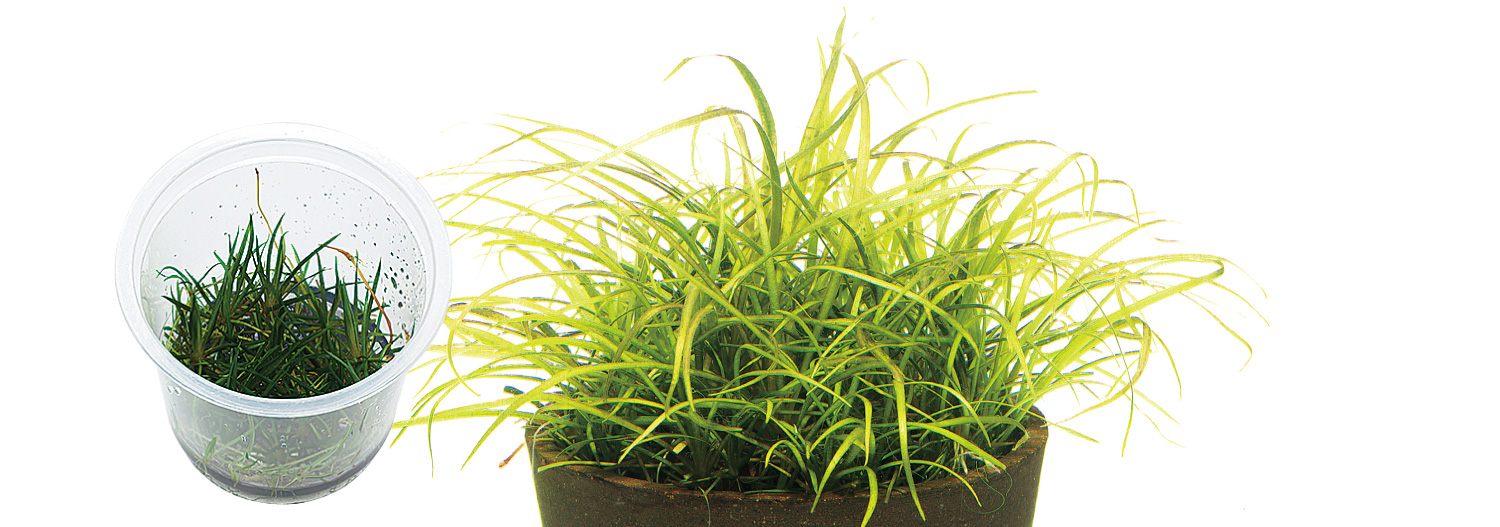
BIO Mizukusa no Mori Echinodorus tenellus
Because of its size, it can be mixed naturally with carpet plants and create a wild feeling though planting by itself is fine too.
Because of its size, it can be mixed naturally with carpet plants and create a wild feeling though planting by itself is fine too.

BIO Mizukusa no Mori Echinodorus tenellus var. broad leaf
Luxuriant wide leaves in light green would look great in Iwagumi or in the middle of a driftwood layout with a large bright impression.
Luxuriant wide leaves in light green would look great in Iwagumi or in the middle of a driftwood layout with a large bright impression.
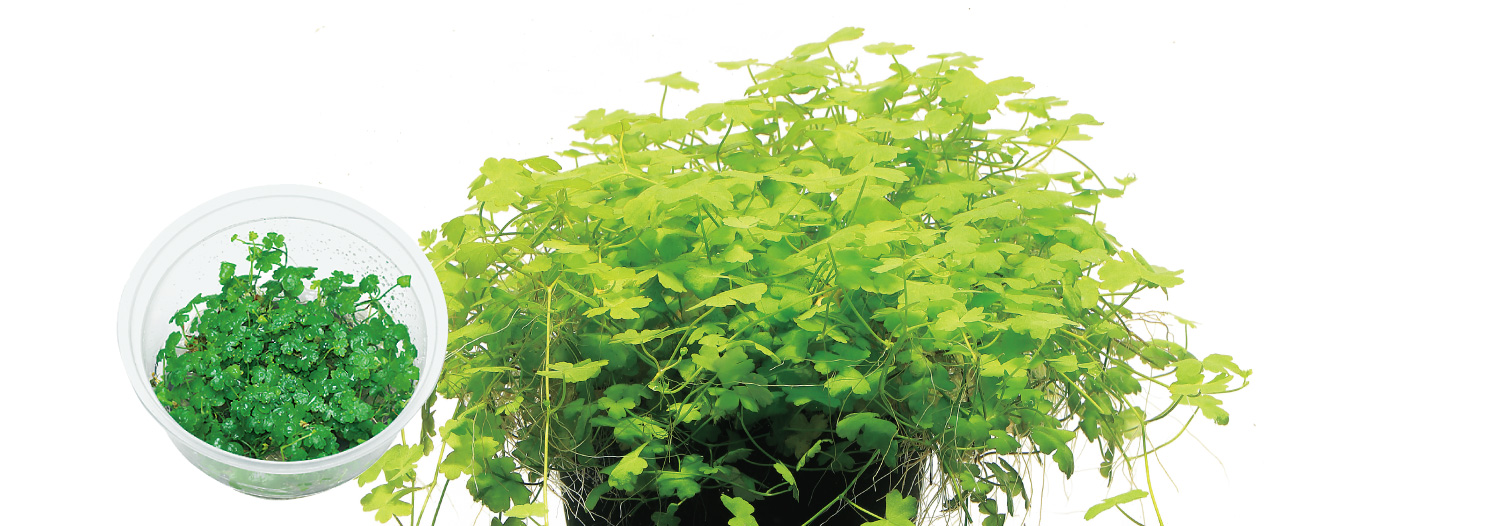
BIO Mizukusa no Mori Hydrocotyle tripartita
Leaves like maple look lovely, and it is versatile for various expressions such as winding with moss on driftwood, or having it crawl on Unzan Stones.
Leaves like maple look lovely, and it is versatile for various expressions such as winding with moss on driftwood, or having it crawl on Unzan Stones.
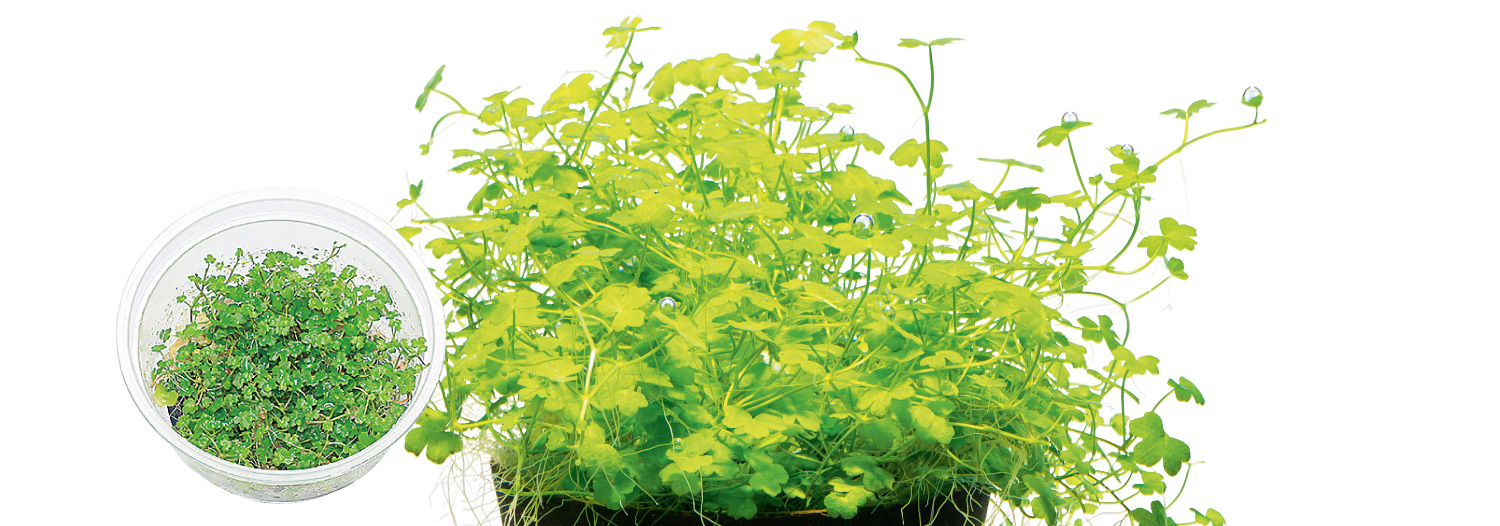
BIO Mizukusa no Mori Hydrocotyle sp.
It is more likely to tilt than Hydrocotyle tripartite. It would be great to use in small aquarium tanks.
It is more likely to tilt than Hydrocotyle tripartite. It would be great to use in small aquarium tanks.

BIO Mizukusa no Mori Lilaeopsis brasiliensis
It develops slender flat leaves. It should definitely be a candidate for a layout with a profound impression.
It develops slender flat leaves. It should definitely be a candidate for a layout with a profound impression.
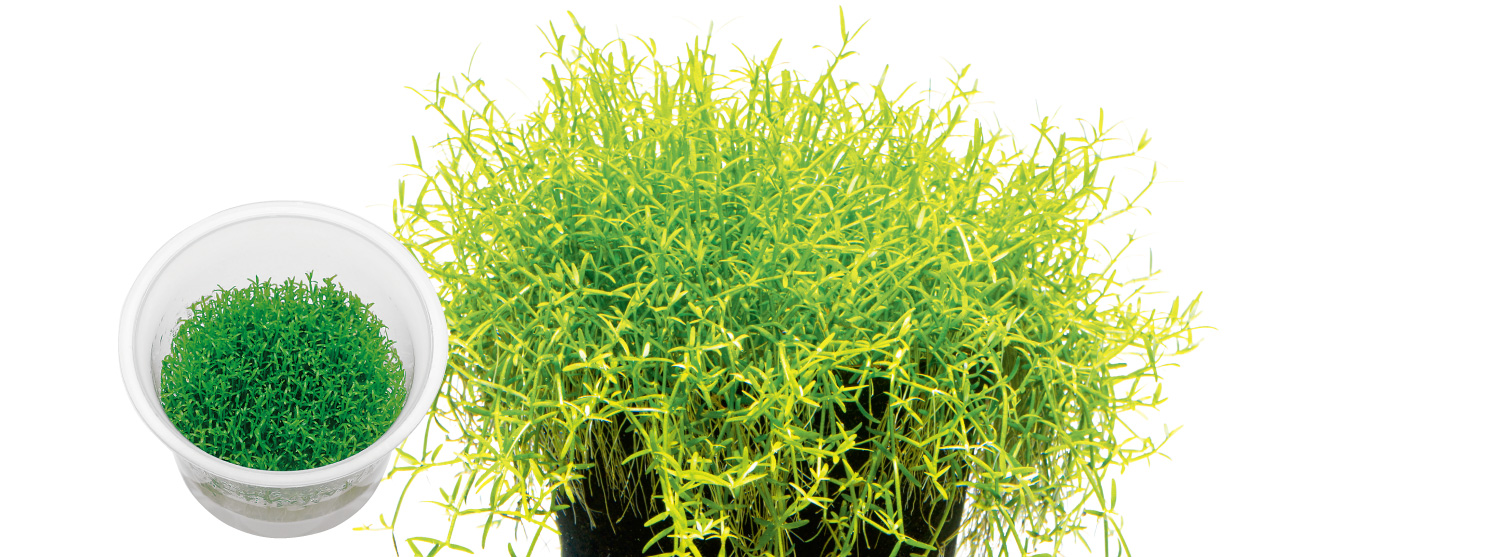
BIO Mizukusa no Mori Microcarpaea minima merrill
The way it crawls and its delicate look are charming in the foreground. When it is planted too densely, or the amount of light is not enough, it will stop growing much. So the lighting environment should be well-prepared.
The way it crawls and its delicate look are charming in the foreground. When it is planted too densely, or the amount of light is not enough, it will stop growing much. So the lighting environment should be well-prepared.
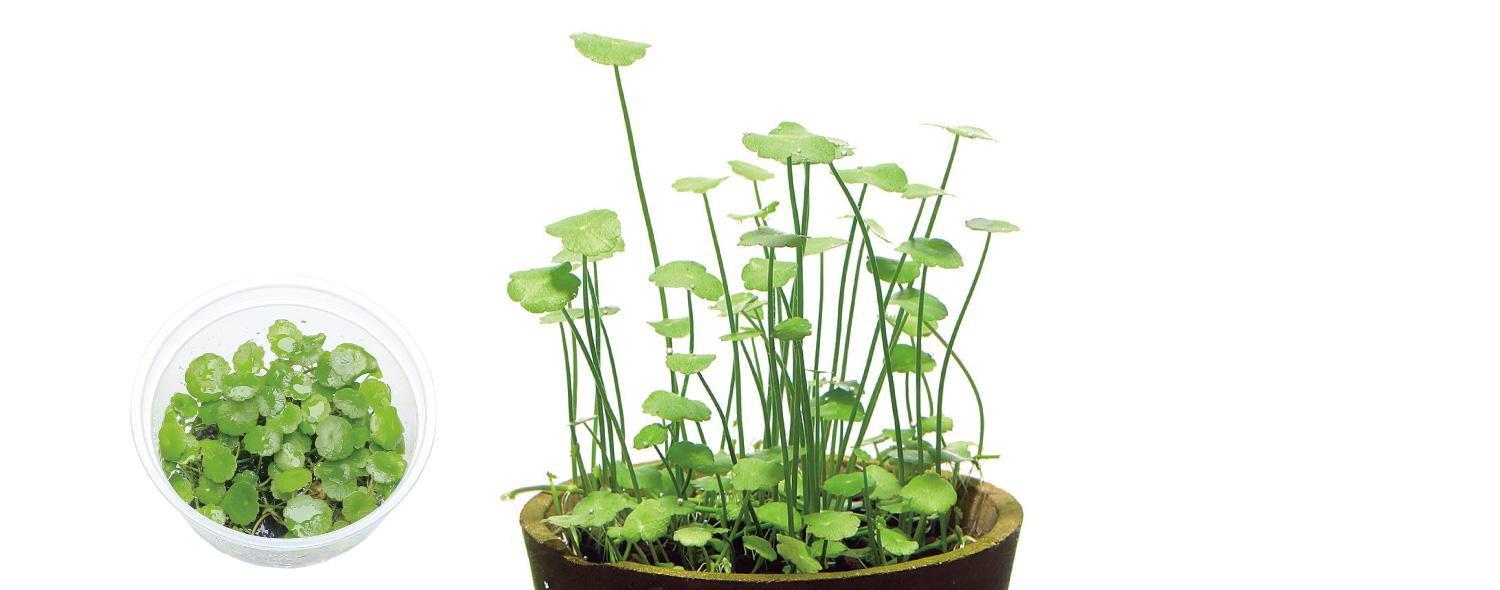
BIO Mizukusa no Mori Hydrocotyle verticillata
Lovely leaves of this aquatic plant look like lotus leaves. It will be a great accent in the mid-ground. Because it tends to grow quickly, over-grown runners should be picked accordingly.
Lovely leaves of this aquatic plant look like lotus leaves. It will be a great accent in the mid-ground. Because it tends to grow quickly, over-grown runners should be picked accordingly.

BIO Mizukusa no Mori Riccia fluitans
Air bubbles by photosynthesis look beautiful. If it is attached to stones and placed effectively, a dream-like aquascape can be instantly created.
Air bubbles by photosynthesis look beautiful. If it is attached to stones and placed effectively, a dream-like aquascape can be instantly created.
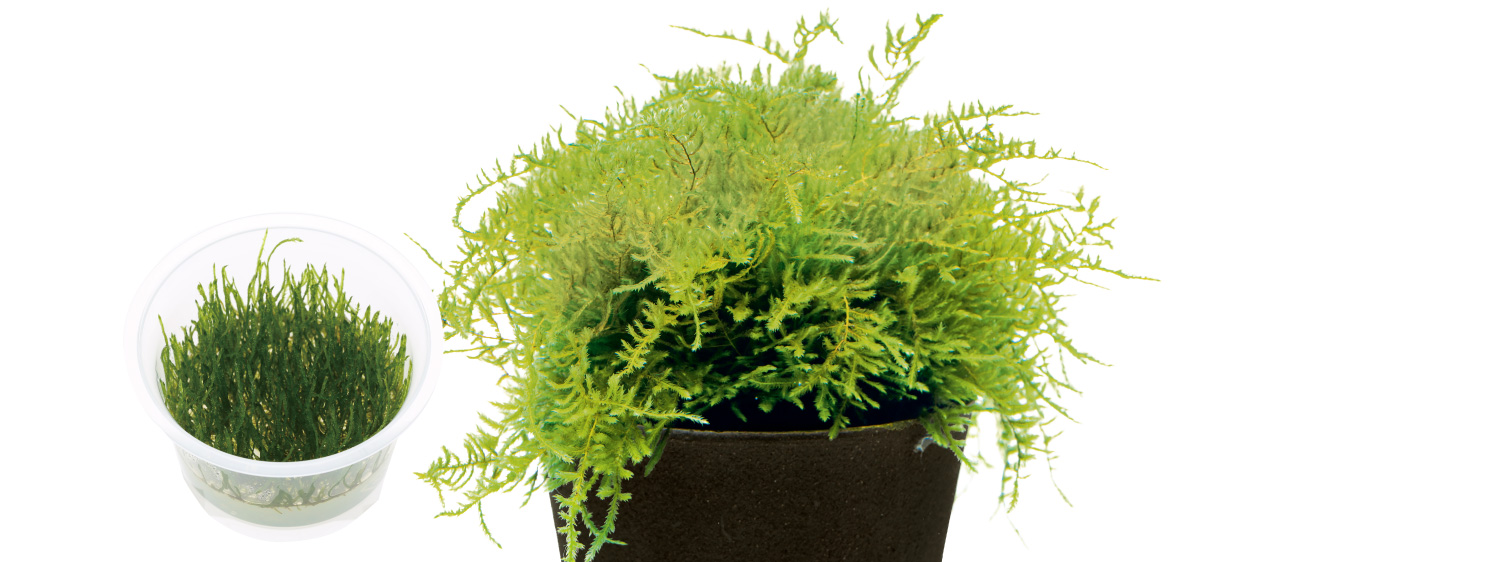
BIO Mizukusa no Mori Taxiphyllum barbieri
Although there are a few types that are called Willow Moss, this species is a stable epiphyte, and recommended for layout beginners.
Although there are a few types that are called Willow Moss, this species is a stable epiphyte, and recommended for layout beginners.

BIO Mizukusa no Mori Vesicularia montagnei
It develops in a longer triangle than Vesicularia sp. A thick cluster will be a great accent in a layout.
It develops in a longer triangle than Vesicularia sp. A thick cluster will be a great accent in a layout.

BIO Mizukusa no Mori Vesicularia ferriei ‘Weeping moss’
Because of its crawling and weeping features, it goes well with driftwood and Unzan Stones. It is recommended to use Riccia Line for the slow growth.
Because of its crawling and weeping features, it goes well with driftwood and Unzan Stones. It is recommended to use Riccia Line for the slow growth.

BIO Mizukusa no Mori Riccardia chamedryfolia
Its subtle presence would be great when you don’t want to erase a powerful look of composition materials. With Riccia Line, it can be used for Paludarium too.
Its subtle presence would be great when you don’t want to erase a powerful look of composition materials. With Riccia Line, it can be used for Paludarium too.

